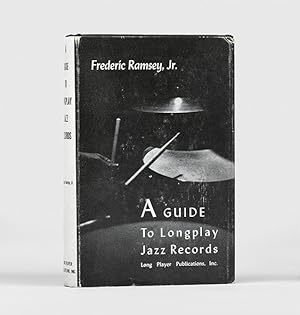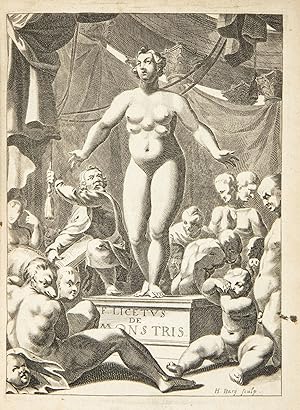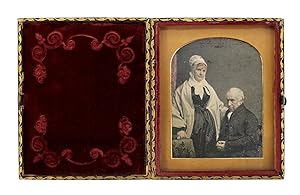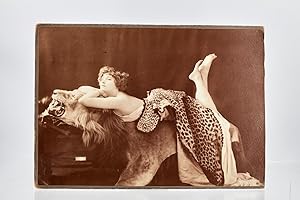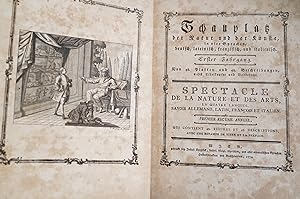art spectacle (46 résultats)
Type d'article
- Tous les types d'articles
- Livres (35)
- Magazines & Périodiques
- Bandes dessinées
- Partitions de musique
- Art, Affiches et Gravures (7)
- Photographies (2)
- Cartes (1)
-
Manuscrits &
Papiers anciens (1)
Etat
- Tous
- Neuf
- Ancien ou d'occasion
Reliure
Particularités
- Edition originale (16)
- Signé (7)
- Jaquette (2)
- Avec images (42)
- Sans impression à la demande
Livraison gratuite
Pays
Evaluation du vendeur
-
RARE COLLECTION de 3000 affiches publicitaires originales françaises" dont près de 2000 entoilées, publiées entre 1890 et 1980
Vendeur : Mad-Museum, Velleron, France
Art / Affiche / Gravure Edition originale
Pas de couverture. Etat : Très bon. Edition originale. "RARE COLLECTION de 3000 affiches publicitaires originales françaises" dont près de 2000 entoilées, publiées entre 1890 et 1980 / Toutes sont thématiques et les principaux sujets traités sont : ALCOOLS, VINS, BIÈRES, BOISSONS, TABAC, ALIMENTAIRE, TOURISME, CYCLISME, AUTOMOBILE, AVIATION et Cie AÉRIENNE, NAVIGATION, PAQUEBOT et Cie MARITIME, TRAIN et Cie de CHEMIN DE FER, SPECTACLE, CABARET et MUSIC-HALL, CIRQUE, THÉÂTRE, LITTÉRATURE, PRESSE et JOURNAUX, SPORT, SKI, TAUROMACHIE, MODE, PIN-UP, MILITARIA, GUERRE 1914-1918, GUERRE 1939-1945, POLITIQUE, MAI 1968, ART NOUVEAU, ART DÉCO, POP ART, Etc., Etc., Etc. / Collection visible sur rendez-vous près d'Avignon (Téléphone: 04 90 38 56 82).
-
[Map screen].
Edité par Sold [by] George [Will]dey at y.e Grea[t Toy], Spectacle & P[rint]shop or Grand M[aga]zine [of] Curio[sities .] y.e Corner of Lu[dga]te Street next St. [Pauls], [1721]., London,, 1721
Vendeur : Daniel Crouch Rare Books Ltd, London, Royaume-Uni
Carte
".one of the largest, beautifullest, most useful, and diverting Ornaments." Engraved map of the world, printed on four sheets joined, surrounded by 20 engraved circular and ovoid maps, all with original outline hand-colour, mounted on canvas on a four fold screen, some loss to edges of screen affecting title and imprint, a few maps with areas of loss, the majority skilfully repaired in facsimile, decorative border below, some cleaning and restoration to furniture. George Willdey's magnificent atlas of World in the form of a screen. The present screen consists George Willdey's large four-sheet world map, surrounded by twenty oval or circular maps, and was advertised by Willdey in the Post Man (issue 4112) on the 23rd - 25th November 1721: "A large New and Correct English Map of the World, laid down according to the newest and most accurate Observations and Discoveries made by the Royal Society of London, and the Royal Academy of Sciencies [sic] at Paris, in several different Projections, including the Trade Winds, Monsoons, Variations of the Compass, and illustrated with the Ptolemick, Copernick, and Tychonick Systems, and the Appearances of the Planets, and shews the Hour of the Day in every Kingdom, and Place upon the Earth; with many useful and ornamental Explanations: This Map is 3 Foot 4 Inches deep, and 6 Foot 4 Inches long, and round the same is added, instead of useless Ornaments, a Set of 20 different New Sheet Maps, of the Principal Kingdoms and States of Europe, with particular Historical Explanations to each Map, so as to make it when put together, with its proper Colours and Illuminations, one of the largest, beautifullest, most useful, and diverting Ornaments, as well as best Set of Geography ever yet done of this kind; the Names of the Maps aforesaid, are a Northern Celestial Hemisphere, a Southern, ditto England, Scotland, Ireland, 20 Miles round London, 20 Miles round Oxford, 20 Miles round Cambridge, Germany, France, Spain, Italy, Sweedland, Poland, Denmark, Muscovy, Hungary, the Turks Dominions in Europe, Flanders, and the Seven United Provinces. This Set of Maps may be fitted up several ways and sizes, or bound in a Book, or Sold single, to fit Gentlemens Conveniency; it is done by the Direction and Charge, and Sold by George Willdey, at the Great Toy, Spectacle and Print-Shop, at the Corner of Ludgate street, next St. Pauls, London; where Gentlemen may be furnished with large 2 sheet Maps, fine Prints, Cutlers Ware, and Curious Toys in Gold, Silver, and other Curious Metals and Materials the best of Spectacles, Tellescopes, Reading Glasses, Perspective Glasses, &c. of all which no Person in Europe hath better Goods, better Choice, or Sells more Reasonable." As one can discern from the elaborate - and somewhat overwrought - text in the above advertisement, George Willdey (?1671-1737) was a flamboyant London shopkeeper and self-publicist. His principal business was a a toy-man and seller of luxury goods, jewellery, gold and silver trinkets, and china. However, he was perhaps the first mapseller to widen the appeal of maps from an intellectual elite to the general public. In this respect the map screen must be seen as his most ambitious attempt to broaden their appeal. That he was successful in his aim can be seen from the fact that the playwright John Sheridan mentions them in his comedy, 'School for Scandal' - some 50 years later - in 1777. As Peter Barber states in the entry on the British Library's example, exhibited in their Magnificent Maps exhibition, in 2010: "They [the screens] would have given a flattering impression of the extent of its owner's knowledge and interests, and would have provided an informal geographical education for family, visitors and servants alike." Although evidently popular throughout the Georgian Period, only two other examples of Willdey's work are known: 1) British Library - dated circa 1750; the world map bearing the imprint of Thomas Jefferys, who had purchased the plates from Willdey's son following his father's death in 1737. The arrangement of the circular and ovoid maps differ slightly from the present example. 2) Maclean-Fogg Collection, Chicago - unfortunately, we have been unable, at this present time, to inspect the screen to ascertain its precise date and arrangement of the maps. One must note that the Maclean-Fogg Collection also holds a six panelled screen, which consists of the Willdey's world map in the same state as the present example, but framed by twelve, two-sheet maps, by the cartographer Herman Moll. British Library Maps Screen 2; Barber, Peter, & Harper, Tom, 'Magnificent Maps: Power, Propaganda and Art', British Library, London, 2010, p.98; Armitage, Geoff, & Baynton-Williams, Ashley, 'The World at Their Fingertips: Eighteenth-Century Two Sheet Double-Hemisphere World Maps', British Library, London, 2012, p. 97.
-
Victoria Regia; or the Great Water Lily of America. With a brief account of its discovery and introduction into cultivation: with illustrations by William Sharp, from specimens grown at Salem, Massachusetts, U.S.A.
Edité par printed and published for the author by Dutton & Wentworth, Boston, 1854
Vendeur : Donald A. Heald Rare Books (ABAA), New York, NY, Etats-Unis
Broadsheet. (27 x 21 inches). Letterpress title, 1p. dedication to Caleb Cope, 12pp. text (numbered [5]-16); 1p. index, plate list, note and errata. 6 chromolithographic plates by Sharp & Sons of Dorchester, Mass, 5 after William Sharp, 1 after Allen. Original publisher's brown paper lettered upper wrapper bound in. Expertly bound to style in half green morocco and marbled paper covered boards, spine gilt with raised bands A monument to American colour printing, a work which launched the age of chromolithography as an art in the United States. This work is one of very few truly great American botanical works and is one of the most beautiful flower books ever produced. The Victoria Regia; or the Great Water Lily of America, provides an appropriate showcase for this gigantic water lily, first discovered along the Amazon River and then taken to Britain for cultivation. The so-called "vegetable wonder" was first described by Sir R. H. Schomburg in 1837. From the details he gave, the botanist John Lindley suggested that the lily was a new genera and put forward the name Victoria Regia in honour of Queen Victoria during the first year of her reign. "The giant water-lily is a spectacular flower; nineteenth century commentators describe with amazement the vast dimensions of its floating leaves, which could exceed two meters in diameter, and its great white flower, which opened in the evening and closed again at dawn in a truly lovely spectacle" (Oak Spring Flora). In 1853, Allen, a well-respected horticulturalist and author of a treatise on viticulture, cultivated a seed from the water-lily given to him by Caleb Cope, president of the Pennsylvania Horticultural Society, and the man in whose garden the water-lily first flowered in America on 21 August 1851. Working at his home in Salem, Massachusetts, Allen tended the seed from January to July, when, on the evening of July 21st, the flower finally bloomed. Motivated by his success, Allen hoped to make the glory of the water-lily available to a wider audience and engaged the services of William Sharp, a British-born artist and pioneer of chromolithography then working in Boston. Sharp had been practicing with the new technique of chromolithography as early as 1841, the first person to do so in the United States. His early efforts can be seen in Mattson's The American Vegetable Practice (1841), but, as McGrath states, those chromolithographs are merely "passable." Fortunately, Sharp improved his technique, and his next major project, the plates for Hovey's The Fruits of America (1852), demonstrated to all who viewed them the colourful and dramatic potential of chromolithography. Still, the process was in its infancy, and it would take a work of tremendous ambition to satisfactorily popularise the technique. Allen's proposed book on the water-lily provided such a vehicle. Though the first plate of the Victoria Regia is based on a sketch Allen composed himself, the remaining five plates, which show the gradual development of the flowers from bud to full bloom, are wholly attributable to Sharp. Superlative in concept, colour, and execution, they became the first benchmark of the art. "In the large water lily plates of Victoria Regia, Sharp printed colors with a delicacy of execution and technical brilliance never before achieved in the United States" (Reese, Stamped with a National Character). Great Flower Books (1990) p.69; Hofer Bequest 72; Hunt Printmaking in the Service of Botany 56; Nissen BBI 16; Reese Stamped with a National Character 19; Stafleu & Cowan TL2 85; Tomasi An Oak Spring Flora 106.
-
Victoria Regia; or the Great Water Lily of America. With a brief account of its discovery and introduction into cultivation: with illustrations by William Sharp, from specimens grown at Salem, Massachusetts, U.S.A.
Edité par printed and published for the author by Dutton & Wentworth, Boston, 1854
Vendeur : Donald A. Heald Rare Books (ABAA), New York, NY, Etats-Unis
Folio. (27 5/8 x 21 1/4 inches). Letterpress title (verso blank), 1p. dedication to Caleb Cope (verso blank), 12pp. text (numbered [5]-16); 1p. index, plate list, note and errata (verso blank). 6 chromolithographed plates by Sharp & Sons of Dorchester, Mass. (5 after William Sharp, 1 after Allen). Cloth-backed lettered paper boards. Housed in a green morocco backed box. A monument to American colour printing, a work which launched the age of chromolithography as an art in the United States, and one of the most beautiful flower books ever produced. The Victoria Regia; or the Great Water Lily of America, provides an appropriate showcase for this gigantic water lily, first discovered along the Amazon River and then taken to Britain for cultivation. The so-called "vegetable wonder" was first described by Sir R.H.Schomburg in 1837. From the details he gave, the botanist John Lindley suggested that the lily was a new genera and put forward the name Victoria Regia in honour of Queen Victoria during the first year of her reign. "The giant water-lily is a spectacular flower; nineteenth century commentators describe with amazement the vast dimensions of its floating leaves, which could exceed two meters in diameter, and its great white flower, which opened in the evening and closed again at dawn in a truly lovely spectacle" (Oak Spring Flora). In 1853, Allen, a well-respected horticulturalist and author of a treatise on viticulture, cultivated a seed from the water-lily given him by Caleb Cope, president of the Pennsylvania Horticultural Society, and the man in whose garden the water-lily first flowered in America on 21 August 1851. Working at his home in Salem, Massachusetts, Allen tended the seed from January to July, when, on the evening of July 21st, the flower finally bloomed. Motivated by his success, Allen hoped to make the glory of the water-lily available to a wider audience, and engaged the services of William Sharp, a British-born artist and pioneer of chromolithography then working in Boston. Sharp had been practicing with the new technique of chromolithography as early as 1841, the first person to do so in the United States. His early efforts can be seen in Mattson's The American Vegetable Practice (1841), but, as McGrath states, those chromolithographs are merely "passable." Fortunately, Sharp improved his technique, and his next major project, the plates for Hovey's The Fruits of America (1852), demonstrated to all who viewed them the colourful and dramatic potential of chromolithography. Still, the process was in its infancy, and it would take a work of tremendous ambition to satisfactorily popularise the technique. Allen's proposed book on the water-lily provided such a vehicle. Though the first plate of the Victoria Regia is based on a sketch Allen composed himself, the remaining five plates, which show the gradual development of the flowers from bud to full bloom, are wholly attributable to Sharp. Superlative in concept, colour, and execution, they became the first benchmark of the art. "In the large water lily plates of Victoria Regia, Sharp printed colors with a delicacy of execution and technical brilliance never before achieved in the United States" (Reese, Stamped with a National Character). Great Flower Books (1990) p.69; Hofer Bequest 72; Hunt Printmaking in the Service of Botany 56; Nissen BBI 16; Reese Stamped with a National Character 19; Stafleu & Cowan TL2 85; Tomasi An Oak Spring Flora 106.
-
Buffalo Bill [and the "Frenchman's Bottle Gag," a comic tableau from the wild west show]
Date d'édition : 1893
Vendeur : Donald A. Heald Rare Books (ABAA), New York, NY, Etats-Unis
Art / Affiche / Gravure Signé
Oil on canvas, laid down on wood, 22 x 30 inches. Signed and dated lower left: "Alfred Agoust / 1893," titled: "Buffalo Bill" on Kennedy Gallery labels. Superb condition, period-style gilt American exhibition frame. Provenance: Kennedy Galleries (labels); Collection of Edward Eberstadt & Sons. A very rare contemporary oil painting of an Act in Buffalo Bill's Wild West Show: Amost all of the images of the Wild West show are found in the great lithographic posters and photographs produced by the William F. Cody publicity machine. Period oil paintings of the Buffalo Bill act are very rare indeed. This wonderful image, showing a comic routine Buffalo Bill evidently adopted from European circus acts, is a unique contribution to the iconography of the Wild West Show. This entertaining painting almost certainly depicts a version of the comedy pantomime routine called "The Frenchman's Bottle Gag" as performed in England by Buffalo Bill Cody's Wild West Show. The painting shows a bewildered Buffalo Bill in the center of the canvas, apparently ready to come to blows with two cockney characters on either side of him, one of whom is swilling a drink from a flask. A prominent historian of performance tells us: "The gag, made famous in Paris by the Hanlon Brothers and their collaborator, the Agoust Family Jugglers, in the long playing three-stage acrobatics, magic, and pantomime spectacular, Le Voyage en Suisse, usually involves two clowns, a ridiculously dressed Frenchman, and his bottle. The clowns steal his bottle and surreptitiously sneak sips back-and-forth, as the bewildered Frenchman desperately attempts to figure out who's got his bottle. This image is of costers or pearlies, East End London cockneys, victimizing the Buffalo Bill character - the old Hanlon & Agoust drinking routine re-costumed for the Wild West show's British audience." Buffalo Bill Cody's Wild West Show made two extensive tours of England and Europe prior to the date of this painting, 1887-1888, arriving for Queen Victoria's Golden Jubilee, and 1889-1893, playing the great theaters and fairgrounds. The 1893 tour was at the height of the show's fame. The 1893 show program correctly stated, "Since the visit of Buffalo Bill's Wild West to England and its remarkable engagement in London, at West Brompton, in 1887, a history and tour have been made, such as no organization of its magnitude and requirements ever accomplished." Henri Agoust, the Hanlon's long-time collaborator (the parties later fell out and sued each other in a bitter legal dispute), had a son named Alfred, a member of the Agoust Family Jugglers. According to a census of traveling show people, he would have been in his early twenties in 1893. His biography is otherwise unknown. It seems likely, however, that the juggling Alfred Agoust was also the well trained, talented artist responsible for this magnificent show business painting, with its attention to costume, props, and comic gesture, demonstrating the specialized knowledge of the insider. John A. McKinven The Hanlon Brothers, their amazing acrobatics, pantomimes and stage spectacles (Glenwood, Illinois: David Meyer Magic Books, 1998), passim; Buffalo Bill's Wild West and Congress of Rough Riders of the World (Chicago: Blakely Printing Company, [1893]), passim.
-
Pompa introitus honori serenissimi principis Ferdinandi Austriaci Hispaniarum Infantis S.R.E. Card. Belgarum et Burgundionum Gubernatoris etc. a S.P.Q. Antwerp. Decreta et adornata. .Antwerp, Theodoor van Tulden (colophon: printed by Jan van Meurs, 1641), [published January 1643]. Royal 1mo (full-sheet leaves) (57 x 42 cm). With a letterpress half-title and XXXIX single-page, double-page and larger folding plates (numbered I-XXXIX in the table of plates, printed and assembled from 43 copper plates numbered [1]-[2], 3-43) depicting the rich allegorical and ornamental triumphal arches and festive decorations, paintings, statues, etc., all designed by Pieter Paul Rubens, all but one for the triumphal entry of the Spanish cardinal-infante Ferdinand into Antwerp in 1635. Further with 46 smaller engravings in the text, depicting coins and medals, and numerous woodcut decorated initials (4 series). Contemporary overlapping vellum, manuscript title on spine.
Vendeur : ASHER Rare Books, T Goy Houten, Pays-Bas
[10], 189, [13] pp. plus 38 plates.One of the 200 deluxe copies reserved for the Antwerp magistrates, printed on heavy Venetian paper and including the equestrian portrait of Ferdinand, of a splendid monument of Baroque book illustration by Pieter Paul Rubens (1577-1640), the greatest Flemish artist of the 17th century: one of the most sumptuously illustrated books of the 17th century. It illustrates and describes the spectacular triumphal entry of Cardinal-Infante Ferdinand of Austria (1609-1641), Infante of Spain, into the city of Antwerp on 16 May 1635, after his victory at the Battle of Nördingen in 1634. The city was richly decorated for his triumphal procession with wooden arches, stages and paintings by Rubens. The present work, commissioned by the Antwerp city magistrates to commemorate the procession and festivities, records Ferdinand s entry into Antwerp in great detail, in both words and images.Arents notes two different Van Thulden states of the imprint and dates the present one with "veneunt exemplaria apud ." before that with "venduntur apud", and the deluxe copies for the magistrates appear to more-or-less randomly show either imprint with either the 1641 or the 1642 colophon, so these may not distinguish different issues. Arents describes the present half-title (wholly lacking in some copies) as the first of three versions (beginning "Pompa introitus Ferdinandi", while the others begin "Pompa triumphalis Ferdinandi" and "Pompa triumphanalis introitus"), but again it is not clear that this has any significance for the issue. The book, one of the most monumental publications of the 17th century, has a complicated publishing history occupying more than seven years, with publication delayed by the deaths of Rubens in 1640 and Ferdinand in 1641. The colophon of the present copy is dated 1641, but it includes plate 43, which the Antwerp magistrates commissioned from Van Thulden on 9 December 1641, so that it was certainly printed in 1642: Ferdinand s magnificent triumphal chariot with numerous allegorical figures and an inset view of his victory at the Battle of Kallo (20 June 1638) after a design by Rubens.Its large size and numerous copperplate illustrations made it one of the most expensive books produced in the 17th century, but the large plates also allowed Van Thulden to enhance the quality of the illustrations, depicting the arches and stages designed by Rubens for the Baroque festivities in great detail. The present copy is one of the 200 deluxe copies reserved for the Antwerp city magistrates. These copies were printed on heavier Venetian paper, watermarked: anchor in a circle, topped by a star.Binding with only a few spots and some scratches. With a few minor spots in the text and on the plates, some foxing on the back of plate 33, some leaves a bit crinkled (for example the half-title), with a few minor tears in some plates (mostly on the folds of the folding plates), not affecting the images, otherwise in very good condition. A beautiful deluxe copy of a splendid display of Rubens s magnificent illustrations of Ferdinand of Austria s triumphal entry into Antwerp in 1635.l Atlas Van Stolk II, 1764; Prosper Arents, "Pompa introitus Ferdinandi: bijdrage tot de Rubensbibliografie", in: De Gulden Passer, 27 (1949), pp. 81-340; Carmen Arnold-Biucchi, "Coins and classical imagery in the time of Rubens: the stage of welcome in Caspar Gevartius's Pompa introitus Fernandi", in: Knaap & Putnam, Art, music, and spectacle in the age of Rubens: the Pompa introitus Fernandi (2013), pp. 189-215; Landwehr, Splendid ceremonies 99; Muller, Historieplaten 1727; STCV 12858454; Millard architectural collection, northern European books 38; Von Roeder-Raumbach & Evers 28.
-
Le nozze degli dei favola Dell' Ab' Gio. Carlo Coppola Rappresentata in Musica in Firenze nelle reali nozze De Serenis.mi Gran Duchi di Toschana Ferdinando II. e Vittoria Principessa d'Urbino BOUND WITH Relazione delle nozze degli dei favola dell'Abate Gio: Carlo Coppola Rappresentata nelle reali Nozze de'Sereniss. Gran Duchi di Toscana Ferdinando II. E Vittoria Principessa d'Vrbino. Alla Medesima Gran Dvchessa di Toscana
Edité par Amadore Massi and Lorenzo Landi, Florence, 1637
Vendeur : Arader Books, New York, NY, Etats-Unis
Edition originale
Softcover. Etat : Very good. First. First editions. Florence: Amadore Massi and Lorenzo Landi, 1637. Quarto (9 5/8" x 6 3/4", 236mm x 172mm). [Full collation available.] With an engraved title-page integral to the text, and 7 folding engraved plates by Stefano della Bella after designs of Alfonso Parigi. Bound in contemporary limp laced vellum. Author and title ink manuscript to the spine. Soiling to the edges of the binding, with some loss to the front upper fore-corner. Text-block loose although not precarious, split at H1. A little worming to the paste-downs and to the first free end-paper, not affecting text. F4 laid in, and a dampstain to the lower fore-corner of 2E-F2. A totally unsophisticated copy, with the long stubs of the plates. With the bookplate of Paul and Marianne Gourary (from their sale) on the front paste-down. (Ownership?) signature twice of "Sig.r Gio(rgio) Pavoli" on the verso of the final free end-paper. Ferdinando II de' Medici (1610-1670) became Grand Duke of Tuscany at the age of 10, and his mother and grandmother served as his regents and matchmakers. They arranged a marriage in 1634 to his first cousin, Vittoria della Rovere, granddaughter of the last Duke of Urbino. The aim of the union was to merge the Duchy of Urbino into that of Tuscany, but the gambit ultimately failed; Urbino was absorbed by the Papal States. The products of the marriage, therefore, were their two children who lived to adulthood and the account of the splendid wedding celebrations. As befitted the union of two of Italy's great noble families, the wedding was a multi-day spectacle at the Palazzo Pitti. In these early days of opera, the totality of the art-form (Wagner's Gesamtkunstwerk) was perfectly suited to these grand occasions. Giovanni Carlo Coppola (1599-1651) was the librettist of a tale (favola) of the marriage of the gods Venus and Vulcan (which was perhaps prescient; Venus cheated on her husband with Mars; conversely, Vittoria is said to have found her husband in bed with his pageboy), Jupiter and Juno (in heaven), Neptune and Amphitrite (in the sea) and Pluto and Proserpino (in the underworld). The music was overseen by Marco da Gagliano, maestro di capella of the Medici court, but there were in fact five composers commissioned to contribute (p. 27), with Ferdinando Saracinelli conducting. Agnolo Ricci was choreographer of the several balli bracketing the drama, and Alfonso Parigi designed the sets (including the elaborate stage machines). These sets are reproduced in the folding plates, and give a sense of the grandeur of the production. Coppola's libretto is the first portion of the work, and the second part is a description, attributed to Rondinelli, of the production as a whole, a surpassingly rare account of early operatic stagecraft. We learn, for instance, that there were around 150 singers and at least 25 dancers in the production. In addition, this appears to be the earliest recorded usage of the word "opera" to mean a musical drama, rather than "works," which is its literal translation; the Oxford English Dictionary places the earliest usage in this sense two years later in 1639. Most intriguing is the double signature to the verso of the final free end-paper of Giorgio Pavoli, who was gonfaloniere (mayor) of Livorno, the great port of Tuscany, in 1631. Ferdinando II oversaw a major modernization of the city from 1629, and in the year of Pavoli's mayoralty the Chiesa di Sant'Anna was opened, doubtless a major event. It is possible that Pavoli was invited to the wedding, and bought the book three years later as a souvenir. Centuries later, the present item joined the great collection of "fête books," as they are known, amassed by Paul (principally) and Marianne Gourary. After Paul's death in 2007, the collection -- "Splendid Ceremonies" -- was sold by Christie's New York (12 June 2009), in which the present item was lot 512. Berlin Ornamentstichsammlung 4116; Brunet II.262; Nagler, Theater Festivals of the Medici, pp. 162-174; Watanabe 1285.
-
ORIGINAL HAND-PAINTED SCROLL OF RUSSIAN ADMIRAL PUTIATIN'S ENVOY & EXPEDITION TO
Vendeur : RARE ORIENTAL BOOK CO., ABAA, ILAB, Aptos, CA, Etats-Unis
[Nagasaki 1853]. Hand-painted color scroll, 29.8 x 214 cm., long, bright & clean example, nicely mounted & re-backed, in custom Kiri wood box, a bit of old, minor restoration to lower edge, exertly executed. * * OBSCURE & RARE EXAMPLE * * . *** **** *** . . . EXTREMELY RARE ORIGINAL-PAINTED PRIMARY RESOURCE . . . DOCUMENTING THE HISTORIC FIRST RUSSIAN VISIT TO NAGASAKI . . . LED BY VICE ADMIRAL YEVFIMY PUTYATIN [PUTIATIN] . . . A HAND-PAINTED COLOR JAPANESE SCROLL . . . ARTIST SIGNED, DOUBLE SEALED & DATED KAEI 6 [1853] . . * In August 1853, a year and a month after American Commodore Perry landed at Uraga [near Yokohama & Tokyo], four Russian Warships entered Nagasaki harbor, under the command of Vice Admiral Euphimius [Yevfimy] Putiatin, representing the Russian envoy to Japan. [There are many variations for the spelling of the admiral including: "Admiral Evfimii Vasilievich Putiatin." . The Admiral came to Japan with much the same purpose as Perry, to establish diplomatic relations and open the country to foreign commerce. His mission culminated a half-century of similar [but failed] attempts, the first in 1803 with a visit by Russian Nicholai Rezanov. . Like the results Perry received, the arrival of Putiatin caused a similar flurry of confusion in Nagasaki. Nagasaki being a very long distance from Edo, the seat of Japanese government, meant that Putiatin's answer was severely delayed. . Ultimately Putiatin's mission to Nagasaki was a failure and was upstaged by Perry and his visit to Yokohama and direct communications with the ruling powers. Nagasaki was simply too far from the seat of Japanese government to accomplish anything. . See McOmie & French below, where they carefully outline the whole Russian affair. . *** A HAND-PAINTED COLOR SCROLL: . This excellent painting is brush signed by the artist GIRIN Joh and sealed twice sealed with his red cinnabar Hanko [chop/seal] at the end. At the beginning is his brushed date: Kaei 6th year [1853], July 18th. . This scroll was painted in the "DORO-E" style, a kind of gouache or water color, using natural color elements & pigments. . *** KIRI BOX: The scroll is contained in a period old custom-made Japanese Kiri [cryptomeria] box, with bamboo 'nails," and a very tight-fitting lid. Designed to keep air and insects from entry. The scroll is wrapped in sheets of old Washi paper. Box size is: 35.3 x 8 x 6.5 cm. The box is in excellent condition, no markings. . *** DOCUMENTING THE FIRST NAGASAKI ARRIVAL OF RUSSIANS IN 1853: . An early example commemorating the arrival of four man-of-war sailing Russian ships, commanded by Admiral Putiatin. Beautifully illustrated showing the Russian imperial flag, sailors & marines parading in Nagasaki. . Putiatin and his fleet arrived in Nagasaki for trade negotiations and boundary discussions on the Kuriles and Sakhalin. . As a result, the Japanese-Russian Friendship Treaty and the Russian-Japanese Commerce & Navigation Treaties were concluded. Both countries then entered in to diplomatic relations. . The scroll shows four stunning Russian man-of-war frigate sailing ships at anchor in Nagasaki bay. Nicely illustrating a group of Russian sailors & marines. Putiatin is shown with a red sword and fancy hat with an ostrich feather. . A lovely procession of Putiatin and his military force parade on the beach, with his chair bearers marching in unison. . *** A PRIMARY RESOURCE: . A beautiful work, painted by the eye-witness artist, GIRIN, who sat on the bluff, and painted the actual scene. . Period hand-painted scrolls documenting the event of this high quality and caliber remain obscure and quite RARE ! . GIRIN had also painted other similar views, they are illustrated in Mody, below. They show other views of foreigners, Dutch, Spanish, Chinese &c, along with their shipping. . The work is signed: "KIYOH 71 OH" [painted by] "Seventy-one years old man in Nagasaki," meaning he was born ca. 1782. . *** RUSSIANS AT NAGASAKI HARBOR SCENE: . This lovely work shows four great frigates in full sail, two of which are very grand and large, the other two a bit smaller but still grand and impressive. Each vessel flies a good number of flags and pennants. . The four ships are anchored near the shore in the Nagasaki harbor. There are many small Shogun guard boats anchored just adjacent to the Russian vessels to insure no unauthorized personnel go to the shore, as this was forbidden by the Shogun. . *** THE PAINTINGS & DRAWINGS: . This scroll is divided into three separate "views." From the right to the left [Japanese style], it begins with: . a. A grand view of the four Russian vessels at anchor. Beautifully painted against a pale blue sky, pink horizon and blue Nagasaki bay waters. The ships are illustrated in all of their glory, with tiny crew members dotted here and there. Flags and pennants of all colors are flying from the masts which are in full sail. There is some Japanese text in the sky outlining the names of things on the ships, size and other notes. . b. Color painted against a white background is the ship's crew and honor guard. Central are the four ship captains, including Vice Admiral Putiatin who wears a fancy gilt cap, an outstanding blue tunic with gold decorations, and carries a red sword. Other captains also wear a similar cap, all with a decorative ostrich feather, they wear different colored tunics with gold decorations. The flag-bearer proudly holds the Imperial Russian flag ahead of the ship's officers. . The other officers all carry swords and wear similar tall gold decorated caps. Some carry presents for the Japanese. . The officers are followed by a group of crew members, the last of which is carrying Putiatin's green chair, he has a very sour face ! . Preceding this group of ship's company is group of 19 musket-bearing marines, led by an officer. . c. Preceding this group is a group of twenty sailor-musicians playing brass with drums, leading the spectacle. . The artist signature follows the musicians.
-
La Loïe Fuller. Estampes modelées de Pierre Roche
Edité par Charles Hérissey [pour les Cent Bibliophiles], Évreux, 1904
In-4 de 26 pp., les deux dernières non chiffrées, en feuilles, sous couverture rempliée et illustrée en couleurs ; étui de l?éditeur en papier japon ivoire portant, sur le premier plat, le titre ; cordons de soie jaune Édition originale : tirage unique à cent trente exemplaires sur papier vélin fort, celui-ci, nº 97, pour Georges Teyssier. Edité pour la société des Cent Bibliophiles, le livre marque la première application du caractère italique dessiné par Georges Auriol, gravé et fondu par G. Peignot et fils. Le livre est imprimé selon la méthode chinoise, c?est-à-dire sur un seul côté de feuillets doubles collés ensuite entre eux, afin d?éviter que l?empreinte des gravures n?apparaisse sur la page suivante. L?ouvrage est un hommage à la Loïe Fuller (1862-1928), cette danseuse d?origine américaine dont les spectacles ont fasciné la génération symboliste : elle utilisait de longs voiles transparents qu?elle faisait tournoyer et un savant jeu de lumières, créant ainsi des spectacles féeriques. On se pressait à ses représentations,qui connurent une vogue inouïe : Mallarmé, qui voyait dans la danse ?la forme théâtrale de poésie par excellence?, Rodenbach, qui lui consacra un poème, Jean Lorrain ou Auguste Rodin comptaient au nombre des spectateurs enthousiastes.On y croisait aussi les Curie, Georges Méliès ou les frères Lumière, ainsi que la plupart des artistes, poètes ou écrivains de l?époque. La fluidité et le mouvement très particuliers de ses chorégraphies sont rendus ici par les illustrations gravées en couleurs de Pierre Roche. L?illustration comprend 18 compositions gravées en relief et coloriées, dont une à pleine page et deux planches pour les plats de la couverture. Les gravures sont des gypsotypies : cette technique a été inventée et mise au point par un sculpteur, élève de Rodin, Fernand Massignon dit Pierre Roche (1855-1922). ?Pierre Roche était un sculpteur qui se fit graveur. Séduit par l?aspect nacré et résistant des papiers japonais qui arrivaient alors en Europe, il voulut jouer de leur lumière et inventa l?estampe modelée et nuancée. Dès 1892, il moula sur creux de plâtre des estampes qu?il coloriait ensuite au pinceau : ce qu?il appela des aquarelles estampées.Puis il eut l?idée de considérer la matrice de plâtre comme une gravure sur bois où étaient portés différemment l?encre et la couleur et où le papier humide comprimé à la main prenait à la fois teinte et modelé : ce fut la gypsographie. La fragilité du plâtre ne permettait que des petits tirages, aussi le remplaça-t-il par du métal, qui donnait plus de raideur. C?est par ce dernier procédé, la gypsotypie, qu?il appliqua pour la première fois en 1904,sa technique à un livre, La Loïe Fuller de Roger Marx, où les estampes telles des médailles, s?intégraient à la typographie du texte? (A. Coron, Des livres rares depuis l?invention de l?imprimerie, Paris, BnF, 1998, p. 284).Précieux exemplaire complet du rare étui décoré de l?éditeur.Un des cordonnets de soie jaune n?a pas été conservé ; l?autre est abîmé. L?exemplaire est préservé dans une boîte décorée exécutée par Antonio.(Ray, The Art of the French illustrated Book, 1700-1914, nº 358 : ?This little-known volume is like nothing elseof its time.?- Books illustrated by Painters and Sculptors from 1900, The Arts Club of Chicago, 1980, nº 52).
-
RARE COLLECTION de 10000 annonces publicitaires originales françaises" dont près de 1000 entoilées, publiées entre 1920 et 1980
Vendeur : Mad-Museum, Velleron, France
Art / Affiche / Gravure Edition originale
Pas de couverture. Etat : Très bon. Edition originale. "RARE COLLECTION de 10000 annonces publicitaires originales françaises" dont près de 1000 entoilées, publiées entre 1920 et 1980 / Toutes sont thématiques et les principaux sujets traités sont : ALCOOLS, VINS, BYRRH, BIÈRES, TABAC, CIGARETTE, CIGARE, CAFÉ, CHOCOLAT, LAIT, FROMAGE, EAU MINÉRALE, ALIMENTAIRE, TOURISME, AUTOMOBILE, PIÈCES POUR AUTOMOBILE, PNEUMATIQUE, HUILE, CARBURANT, CAMION, AVIATION et Cie AÉRIENNE, PAQUEBOT et Cie MARITIME, TRAIN et Cie de CHEMIN DE FER, SPECTACLE, SPORT, SKI, MODE FÉMININE, MODE MASCULINE, MONTRE, BIJOUX, CHAUSSURE, PARFUM, PRODUITS DE BEAUTÉ, ÉLECTROMÉNAGER, ART NOUVEAU, ART DÉCO, POP ART, Etc., Etc., Etc. / Collection visible sur rendez-vous près d'Avignon (Téléphone: 04 90 38 56 82).
-
5 tomes en 3 volumes in-folio manuscrits de (3)-242 ff. ; (1)-213-(2)-(2)-171 ff. ; (2)-183-(3)-140 ff., tables, veau brun, dos orné à nerfs, tranches jaspées (reliure de l'époque). Superbe manuscrit calligraphié du cérémonial de Nicolas de Sainctot couvrant la période 1660-1684 en cinq parties : 1660-1665, 1666-1671, 1672-1677, 1679-1681, 1682-1684.Nicolas Sainctot (vers 1632-1713) fut pourvu de la charge de maître des cérémonies le 18 janvier 1655 ; le 23 août 1691, il vendit sa charge à Desgranges et acheta une moitié de celle d'introducteur des ambassadeurs. Il se démit de cette dernière le 9 décembre 1709 au profit de son deuxième fils Nicolas-Sixte dit le chevalier de Sainctot.Description des cérémonies extraordinaires, relations de lits de justices, baptêmes, bénédictions, fiançailles, enterrements, pompes funèbres, Te Deum, élections des prévôts, audiences aux députés et ambassadeurs, prestation de serment des échevins - ce recueil s'inscrit dans le prolongement du Cérémonial françois de Godefroy, « dont il constitue en quelque sorte l'application pratique, adaptée au cadre versaillais et aux usages du règne de Louis XIV » (Alexandre Maral, La chapelle royale de Versailles sous Louis XIV: cérémonial, liturgie et musique).C'est durant ce règne que « le cérémonial passe au premier plan, et il exprime tout le système de conventions définissant l'autorité publique. Régler l'ordonnance des cérémonies royales devient l'affaire de professionnels, le grand maître des cérémonies, le maître et l'aide aux cérémonies. Les documents laissés par Nicolas Sainctot illustrent le formidable développement de cet office. Les maîtres de cérémonies reçoivent les ordres du roi pour le Lit de justice, distribuent les convocations, dressent des plans précis de la disposition des sièges, règlent le déroulement de l'assemblée, conservent un compte rendu des séances en un lieu nouvellement prévu à cet effet et soumettent au roi à sa demande des mémoires sur le protocole » (Sarah Hanley Madden, L'idéologie constitutionnelle en France : le lit de justice. 1982).Très beau document qui reprend une partie des quatre volumes du manuscrit original conservés à la B.N.F. sous les références Ms français 14117 à 14120.Catalogue général des manuscrits des bibliothèques publiques de France de Paris, Bibliothèque Victor Cousin, Paris. Bibliothèque (1918) p. 100 ; Saffroy, (I, 15114) indique 7 volumes de 1660 à 1691. Bel exemplaire.
-
. Illustrateur : BRUNELLESCHI (Umberto). (illustrateur). 22 aquarelles pour le spectacle-opérette de Mogador, sur papier cartonné beige, 21 signées en bas à droite, 4 datées (1938), rehauts d'or et de blanc, mine de plomb, feuilles de 32 x 25 environ, dessins de 30 x 15 cm. environ. Umberto BRUNELLESCHI (Toscane-Italie-1849-1949 Paris), peintre, portraitiste, illustrateur, artisre de la mode, publicitaire, affichiste, décorateur italien. Influencé par la Comedia dell'Arte, mais également les créations de la troupe de DIAGHILEV, il crée des costumes pour les Folies Bergère, le Casino de Paris, le théâtre du Châtelet, des théâtres new-yorkais, italiens et allemands. Il commence sa carrière de costumier en 1914, avec une revue de scène aux "Bouffes parisiennes", montée par Madame RASIMI pour laquelle il crée des costumes sur les masques vénitiens. Il travaille ensuite à Florence au théâtre de la Pergola pour deux pièces (1915), puis, toujours pendant la guerre, à la Scala de Milan. A son retour à Paris, il travaille pour le music-hall : les années 1925-1938 sont celles de ses plus grands succès. Sa renommée est telle qu'en 1924, Giacomo PUCCINI lui écrit après avoir composé "Turandot" : "Cher Brunelleschi, Turandot est quasiment terminé. Je pense à vous pour les figures". L'opéra, qui se donne à la Scala en 1925, est un succès. En 1928, il travaille à New-York, sur l'invitation du danseur Léonide MASSINE. Son style se modifie et devient plus structuré et graphique : il met au point sa fameuse silhouette oblongue. Ses motifs décoratifs s'attachent à de nouvelles sources, notamment grâce à la danseuse Joséphine BAKER dans l'opérette d'OFFENBACH, "Créole", en 1934. Les années suivantes voient sa participation intensive aux revues des Folies Bergères et des théâtres du Châtelet ("Au Soleil du Mexique") et de Mogador ("Balalaïka") et enfin le "Turandot" de PUCCINI, mis en scène en 1940 (Cristina Nuzzi, Umberto Brunelleschi, Illustrazione, moda et teatro (1879-1949), F.M.R., 1979, p. 22). Études de costume pour "Balalaïka", l'opérette en 3 actes et 12 tableaux d Eric Maschwitz inspirée par la Révolution Russe de 1917. Créée à Londres en 1936, Balalaïka est remarquée par Maurice Lehmann, le directeur du Châtelet, qui loue le théâtre de Mogador pour l'occasion. Ce spectacle avec couplets d Henri Wernert, musique de Georges Posford et Bernard Grün, airs additionnels de Robert Stolz est joué pour la première fois le 24 septembre 1938. Infimes déchirures, petites rousseurs, forte brunissure sur le dernier dessin. uvre originale.
-
Autograph letter signed.
Edité par N. p. o. d.
Vendeur : Antiquariat INLIBRIS Gilhofer Nfg. GmbH, Vienna, A, Autriche
Manuscrit / Papier ancien
Folio. 2 pp. on single leaves. Comprehensive letter to the choreographer and ballet dancer Léonide Massine, director of the "Ballets Russes de Monte Carlo", concerning Dalí's ballett "Tristan Fou". Dalí had started arrangements for "Tristan Fou" with Massine designated for the leading role in 1937. In the letter Dalí refers to "Tristan Fou" as "our spectacle", meaning Massine and him, and justifies the title with Tristan's mad love for Isolde: "Très cher ami: ge deja bocoub trabaille a notre espectacle [.] - Elle s'apellera TRISTAN FOU ge crois que cest un titre assez abile pour le public [ ] ge pense que les deux noms ensemble son d'un assez gran efet poetique - Mon heubre port du moment ou dans la legende Tristan de bien fou d'amour, l'obsesion du souvenir d'Isolde le devore l'entement jusqua la mort [ ]". For the characterization of Massine's role as a "mad Tristan" who would be hallucinating and depressed Dalí draws an interesting comparison with the comedian Harpo Marx: "Ge vois en vous un Role etonon, ebluisant du 'Tristan fou' allucine, plonge dans un etat de depresion et aneontisements totals [ ] un peu dans l'estile d'Arpo Marx [ ]". An important aspect for Dalí are the costume ideas of the french fashion designer Elsa Schiaparelli who also collaborated in the play. She envisaged an overabundance of bobbin lace and rhinestones for Tristan's costume: "vous serez abille entierement dans des grandes dentelles, tres curieusement decoupes une perruque blonde decoife - Schiaparelly trouve tout le temps des idees pour tout magnifiques! Il i aura enormement de bijoux, naturellement des faux bijous!" In the closing paragraphs Dalí announces that he will do the theater placard himself and that he wants to keep the French title in a possible American production, as it would lose "violence and dramatism" in translation: "Ge pense aussi, que [.] ca serai tres importan que ge puisse faire moi meme l'ofiche de Tristan Fou, destine a la publicite - Dans le cas au le titre perdre en 'violonce et dramatisme' une fois traduit en anglais, ge crois que lon pourrai l'aisser le titre en Français meme pour L'amerique [ ]". - The ballet premiered in 1944 in New York under the title "Mad Tristan". - With some slight tears to the border.
-
par J. de la Tynna, de la Société d'Encouragement pour l'Industrie nationale. Année 1812. XVe année. Prix : 10 fr., et 13 fr., franc de port par la poste, pour tout l'Empire.
Date d'édition : 1812
Couverture rigide. Etat : Très bon. In-8 de 1039 pp. Plein maroquin rouge, encadrement de filets et roulette dorés autour des plats, armoiries de l'Empereur Napoléon Ier au centre des plats, dos lisse richement orné, coupes décorées, doublures et gardes de tabis bleu, tranches dorées. Reliure armoriée de l'époque.211 x 129 mm. --- L'Almanach du Commerce pour l'année 1812 relié en maroquin rouge de l'époque aux armes de l'Empereur Napoléon Ier.Il présente le « Tableau abrégé des principales productions et des principaux objets d'industrie de l'Empire français ; son étendue, sa population, etc.Paris : les manufacturiers, banquiers, négocians, marchands de tous états, agens de change, courtiers de commerce, libraires, journaux et feuilles périodiques, notaires, avocats, avoués, huissiers, etc., etc.; les Ministres, les grandes administrations, les tribunaux, la Banque de France, l'administration des postes, et les jours de départ des lettres pour la France et l'Étranger ; les messageries ; une liste particulière des principaux habitans de Paris ; enfin, les renseignemens les plus étendus dont la connaissance peut être utile au commerce, à l'industrie, aux arts et aux affaires.Départemens de l'Empire Français : l'étendue, les productions, la population, la désignation des préfectures, sous-préfectures, tribunaux, conservation des hypothèques ; les grandes routes, rivières et canaux navigables ; les manufacturiers, banquiers, négocians, libraires, agens de change, courtiers de commerce, principaux marchands, notaires, avoués et huissiers ; les chambres et bourses de commerce ; les chambres consultatives de manufactures, fabriques, arts et métiers ; les consuls et les vice-consuls des puissances étrangères ; les foires principales, etc.Les principales auberges ; les principaux cafés ; les curiosités des grandes villes les édifices publics remarquables par leur antiquité ou leur architecture ; les salles de spectacles, promenades , etc.Principaux états et /// 8vo [211 x 129 mm] of 1039 pp. Full red morocco, gilt framing of fillets and border around the covers, arms of the Emperor Napoléon in the center of the covers, flat spine richly decorated, doublures and endleaves in blue watered silk, gilt edges. Contemporary armorial binding. --- The Trade Almanac for the year 1812 contemporary bound with the arms of the Emperor Napoleon. It presents the "Abbreviated Table of the principal productions and principal objects of industry of the French Empire; its extent, population, etc. Paris: manufacturers, bankers, negotiators, merchants of all states, agents of exchange, commercial brokers, booksellers, newspapers and periodical sheets, notaries, lawyers, solicitors, ushers, etc., etc.,; the Ministers, the grand administrations, the courts, the Bank of France, the postal administrations, and the days of departure of letters for France and Overseas, couriers, a particular list of the principle habitants of Paris; finally, the most extensive information of which the knowledge may be useful to commerce, industry, arts and business. Departments of the French Empire: the extent, the productions, the populations, the designation of the prefectures, sub-prefectures, courts, conservation of mortgages; major roads, rivers and navigable canals; manufacturers, bankers, merchants, booksellers, agents of exchange, commercial brokers, principal merchants, notaries, solicitors and ushers; the chambers and stock of manufacturers, advisory chambers of manufacturers, factories, arts and cragts; consuls and vice-consuls of foreign power; the main fairs, etc. The main inns; the main cafes; the curiosities of large cities public buildings remarkable for their antiquity or architecture; theaters, walks, etc. Main states and main cities of the world: the extent, the principal productions, the population, the industry, the principal merchants and bankers, etc., etc.List of patents granted during the year 1811.Newspapers, books and periodicals.
-
Pencil Portrait of W.B. Yeats.
Edité par October, 1901
Vendeur : Shapero Rare Books, London, Royaume-Uni
Art / Affiche / Gravure Signé
Pencil portrait on paper, signed and dated by the artist; unframed, 215 x 165 mm. A fine pencil portrait of a young W.B. Yeats by the artist Pamela Colman Smith, dated October 1901 and signed with her characteristic cipher. Already with two published collections of Jamaican folk stories and four years of study at the Pratt Art Institute under her belt, the young Pamela Colman Smith could not be accused of lacking in motivation. Some of her earliest published artwork appears in Bram Stoker's souvenir volume for the Lyceum Theatre company's tour of North America in 1899, and it was to Henry Irving and Stoker that she hopefully presented her stage designs when she returned to England, the country of her birth, in 1900. Although this precocious approach came to little, aside from a lasting friendship with Ellen Terry and her daughter Edith Craig, from whom perhaps she acquired the nickname 'Pixie', this did little to dampen her spirits. Colman Smith turned next to William Butler Yeats with her stage designs for a miniature theatre production of The Countess Cathleen, which she had previously performed in New York. 'The fact that she designed this play within two or three years of its first publication in 1895, and at least several months before its first performance in Dublin on 8 May, 1899, is an indication of her up-to-date reading, her experimentalism and her ready response to Yeats's poetry.' (Joan Coldwell, Pamela Colman Smith and the Yeats Family). She described Yeats after their first meeting in March of 1901 as looking 'rather like a demon,' a 'rummy critter!' who appeared bored when asked to perform for 'ladies with ermine collars. who all told him how very much they liked his bloomin' poetry, which probably they had never read or heard of. then W.B. began to talk! folklore - songs, plays, Irish language, and lots more - reciting a sort of folk song which was splendid. it was fun and we all liked it very much!'. Yeats for his part was delighted by her designs and immediately began imagining future productions, while Colman Smith drew two quick sketches of him. Pixie became close friends with the Yeats family, visiting them in Ireland for the first time in the autumn of 1901, where she recalled having 'had just a bully time! - with Lolly and Lilly and Jack Yeats and Willie!'. The present pencil sketch dated October 1901, showing W.B. Yeats in profile with his rimless spectacles and 'just sufficiently crooked bow tie', as Louis Macneice would later put it, may date from this time. It certainly resembles the description given by Pixie from her visit to Dublin in December of the same year, where Yeats was 'like an owl' who 'kind of chants in his talk - and looks through his glasses sort of kockeyed'. Colman Smith later advertised for sale prints of 'A Portrait of W.B. Yeats, from a Drawing by Pamela Colman Smith' in the 9th issue of her publication The Green Sheaf, but it is not clear whether this was after the present pencil sketch. In any case, the drawing certainly was published, perhaps rather unexpectedly, in Yone Noguchi's memoir '13 Years in Britiain and America' (eibei no jusannen). Noguchi had visited Yeats in London, and was later to be a significant influence on his studies of Japanese Noh theatre. It is known that a portrait of Yeats once hung in his studio in Tokyo, but again it is not clear which.
-
L'Occhiale all'Occhio. Dioptrica Pratica [.] Dove si tratta della Luce, della Refrattione de raggi, dell'Occhio, della Vista e degli aiuti, che dare si possono à gli occhi per vedere quasi l'impossibile. Dove in oltre si spiegano le regole pratiche di fabbricare Occhiali à tutte le viste, e Cannocchiali da osservare i pianeti, e le stelle fisse, da terra, da mare, et altri da ingrandire migliaia di volte i minimi de gli oggetti vicini
Edité par per l'herede del Benacci, Bologna, 1660
Vendeur : SOPHIA RARE BOOKS, Koebenhavn V, Danemark
Membre d'association : ILAB
Edition originale
First edition. LENSES, SPECTACLES, TELESCOPES AND MICROSCOPES. First and only edition of this important work on the making of lenses, spectacles, telescopes and microscopes, "the most comprehensive book on the subject" (Ilardi, p. 229). "Seventeenth-century account of dioptrics, dealing with light, refraction, the eye, vision, the invention of spectacles, the making of spectacles and telescopes. The book, which is essentially practical, aims at showing the optical worker how lenses are ground and how they may be used both to remedy visual defects and also for telescopes. The dedication . is to Saint Lucia, the patron saint of the blind and those with diseased eyes" (British Optical Association Catalogue). "An important work in the history of optics, valuable as one of the earliest detailed accounts of methods of grinding and polishing lenses. A large number of fine woodcuts illustrate the machinery and processes described by the author" (Becker Catalogue). The first chapter contains an account of the invention of the telescope, and of Galileo's role in it, and also of the invention of spectacles. The following three chapters deal respectively with optics, the anatomy of the eye, and the mechanics of vision. The remaining ca. 200 pages are devoted to the manufacture of lenses, with extensive discussion of the different kinds of lenses required for various purposes, and the different methods of their design and manufacture. There are descriptions of the Murano glassworks, opticians' tables for the precise measurement of lenses, and illustrations of a lens grinder, glass-cutting shears, lathes and several optical instruments. The full-page portrait of Eustachio Divini, aged 49 years, bears an inscription stating that he is judged by scientists of optics to be the first to have fabricated large telescopes (occhialoni). As several of Divini's works are addressed to Manzini it is reasonable to suppose that this work documents in part Divini's discoveries. This is an unpressed copy on thick paper, bound in contemporary vellum, and with manuscript corrections in Manzini's hand - see, for example, the copy at the Universidad Complutense de Madrid, which has the same corrections in the same hand as our copy. Born of the Bolognese nobility, "Manzini established his own astronomical observatory on the grounds of his estates around Bologna and made his own telescopes, grinding the lenses for them himself . Manzini's [book] was both a theoretical and practical compendium of what was known on optics and on the art of spectacle making from the fusion of glass and crystal to the fitting of glasses for various refractive errors and the insertion of precision lenses in telescopes and microscopes . "In his preface, Manzini expressed his consternation in seeing the art of spectacle making being passed orally from one generation to the other without written instructions and often in strict secrecy so that much valuable information was lost forever. His book was designed to serve as a guide both in theoretical optics as developed by medieval authorities such as Alhacen (965-1040), Witelo (ca. 1230-80), [Roger] Bacon (1214/20-92) and by writers closer to his age such as Johannes Hevelius (1611-87), [Francesco] Maurolico (1494-1575), [Giambattista] della Porta (1535-1615), Christoph Scheiner (1573-1650), [Johannes] Kepler (1571-1630), Marin Mersenne (1588-1648) and [René] Descartes (1596-1650) among others, and in the actual shop practices followed by leading makers of scientific instruments, some of which he had helped to develop. He revealed that he had learned the first rudiments of hand-polishing lenses from a former mirror maker in Venice, Domenico Rambottino, a man without any education (huomo idiota affato) but very skilled in polishing lenses for telescopes, which he supplied throughout Italy and the New World (New Indies) (pp. 238-9). He received additional theoretical and practical instruction from some celebrated instrument makers of the age such as Francesco Fontana (1580-ca. 1656) in Naples, who brought the art to such a degree of perfection that he could rightly boast to be the most "sharp-eyes man from the creation of the universe to his time" (Preface). He reserved the highest praise for Eustachio Divini (1610-85) in Rome who rose above all others in the practice of this art, which can now be called "divine" (an allusion to his last name) because of his accomplishments (Preface). Even great Princes in Italy and elsewhere, he claimed, have not disdained to use their hands in this art through which men can now scan the skies and the stars and contemplate God's creation. And, he observed, "there are few in the world that would not need the benefits of this art before dying" (Preface). There could hardly be a more enthusiastic and eloquent celebration of the usefulness, dignity, nobility, and even "divine" function of the relatively new profession of optical scientist and practitioner. "The preface also emphasized the practical aspects of the art. Although Manzini distilled optical theory in his chapters on light and refraction for the benefit of those more skilled in mathematics, he advised other readers that these sections could safely be skipped, because they were not necessary to become "a perfect master" (maestro). They were advised instead to imitate Divini's career, whose portrait graces the frontispiece of his book. Divini, according to Manzini, had relied more on experience, ingenuity, and good judgment than on books to achieve his astounding results in making the best lenses and telescopes in Europe. He was, indeed, credited by his colleagues to be the "first to have perfected the making of telescopes" [Preface]. "Manzini's detailed and extensive description of lens grinding and polishing surpassed by far earlier treatments, including those published by Della Porta in his Magia naturalis (1589) and by Giovanni Sirtori in his Telescopium (1618). His exposition is based on these and other writings and above.
-
Les Enfants Trouvés de Magritte
Edité par A.C. Mazo et Cie, Paris, 1968
Vendeur : Manhattan Rare Book Company, ABAA, ILAB, New York, NY, Etats-Unis
Edition originale
Original portfolio box. Etat : Fine. First edition. VERY RARE LIMITED EDITION OF SURREALIST MASTER RENÉ MAGRITTE'S LES ENFANTS TROUVÉS, COMPLETE WITH TWELVE BREATHTAKING LITHOGRAPHS. ONE OF ONLY 350 COPIES. "The art of René Magritte has had an influence far exceeding the confines of the art world. Imagery adapted from his paintings has been widely disseminated for more than half a century through advertising, cartoons, film, book jackets, and popular music. His work has continued to appeal to modern audiences hungry for the puzzling conjunctions of the everyday and the fantastic. The inscrutable nature of Magritte's work--coded, self-referential, and incongruous--has [moreover] intrigued several generations of artists," (Stephanie Barron). The first four illustrations (numbered recto) are magnificently unique, conceived by Magritte specifically for this production. While certainly distinctive, these images--as well as the final eight--represent a summary of his favorite ideas and symbols, many taken from recent pictures: the clouds, female torsos, and birds, to name a few. Eight following illustrations were originally created by Magritte for his mural "The Enchanted Domain". An awing 360-degree eight-panel mural, the masterpiece was painted to fulfill a commission by Gustave J. Nellens, owner of the Casino Communal at Knokke-Le-Zoute in Belgium. A massive undertaking for a famously reclusive artist, Magritte commented: "When asked to devise a series of pictures for the walls of a Casino gaming room, I did not think along the lines expected of me. My intention is to offer an artistic spectacle of some significance, and convey a hitherto unknown feeling, a feeling in keeping with the attitude appropriate to a person living in the universe," (Elle, 1953). Nellens himself amassed quite a significant amount of Magritte art; his collection of paintings and lithographs is, even today, unparalleled. Accompanying poem (in French) by Louis Scutenaire, a poet, close confidant of Magritte, and central figure of the Belgian Surrealist movement. A.C Mazo et Cie: Paris, 1968. Complete set of twelve color lithographs on Velin d'Arches (with corresponding text), each lithograph initialed in pencil by the printer Fernand Mourlot, signed on the stone "Magritte" lower right. Oversize folio (46x62 cm). Encased in original illustrated cloth-covered folding box; loose (as issued). Numbered 312/350 on the colophon. Small indentation at box edge. "Une Jeune Femme Présente Avec Grace" with small spot of soiling at extreme corner far away from image; "Les Claires-Voies d'un Jeune Regard Embaument La Fête d'un Vieil Arbre" with hairline scratch (only visible upon close inspection). THE COMPLETE PORTFOLIO IN OUTSTANDING CONDITION: RARE.
-
Jardin de Monceau, près de Paris appartenant à Son Altesse Sérénissime Monseigneur le duc de Chartres.
Edité par Delafosse, Née et Masquelier, Paris, 1779
Grand in-folio (54 x 35 cm) de 12 pp., XVIII planches gravées, demi-veau marbré, dos orné à nerfs, pièce de titre en maroquin rouge, tranches rouges (reliure de l'époque). Unique édition illustrée du plan du Jardin de Monceau dessiné par Carmontelle et gravé par Bertaud et 17 vues de jardins avec personnages, dessinées par Carmontelle et gravées par Colibert, Couché, Deni, Croutelle, Legrand, Lesueur, Lépine, Michel, Michau, Leroi, Bertrand, Cauche. L'explication des planches de Carmontelle.« Le duc de Chartres, futur duc d?Orléans (1747-1793), achète en 1769 la terre de Monceau au lendemain de son mariage avec la princesse de Penthièvre et demande à Carmontelle d?y créer un lieu de plaisir et de rencontre adapté aux fêtes et aux spectacles. Louis Carrogis dit Carmontelle (1717-1806) ingénieur, topographe, écrivain, portraitiste et organisateur de fêtes crée un jardin pittoresque en juxtaposant des scènes qui donnent l?illusion de tous les temps et de tous les pays. Le spectateur contemplera la vue de dix-sept points parmi lesquels : un bois, des tombeaux, un moulin à eau en ruines, un moulin à vent hollandais, un temple en marbre blanc, un obélisque, un minaret, une pyramide égyptienne, une Naumachie. La Chine est partout présente, des constructions vivement colorées en témoignent : barrières, portiques, pavillons et jeu de bague (sorte de carrousel). » (Musée des Arts Décoratifs).Pour la défense du parc baptisé "Folie de Chartres", critiqué depuis son achèvement en 1778, Carmontelle publia en guise de justificatif ses propres dessins avec l'explication des 17 vues. Pour mener à bien cette entreprise, l'architecte paysagiste eut recours à la souscription, le prix d'un tel ouvrage étant déjà élevé.Joint : « Jardin Impérial de Mouceaux (sic). Laissez entrer dans le jardin. Paris, 8 août 1810 le Cte de Fleurieu [gouverneur du Palais des Tuileries] À Monsieur Fouque, employé au Bureau du Quartier-Maître du Palais au Palais Impérial à Paris. » 4 premiers feuillets légèrement brunis sinon très bel ensemble.Cohen-de Ricci, 516 ; Ernest de Ganay, Entre bibliothèque et jardin, n°103.
-
Breviarium totius iuris canonici.
Edité par Memmingen, Albrecht Kunne, 1486
Vendeur : Sokol Books Ltd. ABA ILAB, London, Royaume-Uni
Livre
Hardcover. Etat : Very Good. [C15 BINDING, THE FIRST AUTHOR S PORTRAIT IN PRINT] Folio. ff. (v) 2-129 (*4 a10 b-n8 o10 p8 q5), lacking q6 blank. Gothic letter, double column, ms. initials in red, rubrication throughout, attractive contemporary woodcut portrait of author in his library to recto of first fol. Scattered worm holes, light water stain towards gutter of first few gatherings, minor marginal spotting, red ink marks from initials in a few places, lower outer blank corner of fol. 89 torn, recto of first and verso of last a bit soiled, second leaf strengthened at gutter. A very good, large copy in contemporary south German calf, rebacked with overlaid original spine, lacking centre- and cornerpieces, traces of one clasp and chain holder, blind-stamped to a triple blind ruled cross-hatched design with fleurons and lozenges framing double-headed eagles and four-tailed creatures, raised bands, vellum label with title and casemark heightened in red to upper cover, also (rubbed) to spine, a bit wormed and worn. Early circular armorial paper bookplate ( Bib: Nor ) of City of Nuremberg Library, with small abrasion, to blank section of portrait leaf. The woodcut image of Paolo Attavanti in his library on the first fol., bearing the acronym M[agister] P[aulus] F[lorentinus] o[rdinis] S[ancti] S[piritus] is the first author portrait ever to appear in a printed book. It first appeared in the 1479 edition of this text, published by Leonardus Pachel and Ulrich Scinzenzeler. The head of the Magister with the expressive neckline in his austere plainness is reminiscent of the simplicity of [the Lombard painters] Foppas and Zenales the character of Lombard art is clearly visible in the design (Kristeller, Die Lombardische Graphik der Renaissance , 28). Excellent, well-margined copy of this masterful manual of canon law. Paolo Attavanti (1445-99) was a Florentine preacher, theologian and doctor in utroque iuris (canon and civil law). He was a valued member of the humanist circle of Lorenzo de Medici, which included the philosopher Marsilio Ficino. A prolific writer of hagiographic and historical works, and a commentary to Dante s Divine Comedy . This legal manual for practitioners was designed to make the consultation of canon law easier, speedier and pleasanter . Canon law was the legal system of the Roman Catholic Church, regulating the rights and duties of individuals, property, crime, trials, etc. The thorough index of the Breviarium refers the reader to hundreds of subjects, from purgatory, penance and the images of saints to practical questions like procedures for the election of bishops and the duration of a father s punishment across generations. Fundamental in canon law was the code of behaviour for religious, including whether they were allowed to bear weapons and their duty to avoid all kinds of theatrical spectacles. Judicial regulations covered all phases of trials and explained, for instance, that no criminal accusations could be accepted from excommunicates, actors, heretics, heathens and Jews. Strict regulations on marriage were crucial as aristocrats and princes often infringed them by marrying a close relative or having illegitimate children. The arbor consanguinitatis , which occupies an entire page, illustrated the degrees of kinship whereby individuals were too closely related to be granted leave to marry. The annotator of this copy was interested in these issues as he highlighted sections on the illegitimate offspring of priests, bishops and popes. BMC II, 604; GW M30141; Goff P180; H 7161*; Kristeller, Die Lombardische Graphik der Renaissance, 38 (1479 ed.).
-
Verklaringe van verscheyden kunst-rijcke wercken en hare beweginghe, door orlogie-werck ghedreven, Alles te sien in 't Oude Doolhof tot Amsterdam, op de hoeck van de Loyers-gracht.Amsterdam, Tymen Houthaeck, 1648. Small 4to (19 x 15 cm). With a engraved illustration of a labyrinth on title-page, an engraved plate by P. Holsteyn after A. Vinckenbrinck, 3 engravings in text and a folding engraved plate of David & Goliath. Modern marbled wrappers.
Vendeur : ASHER Rare Books, T Goy Houten, Pays-Bas
[8] ll.Extremely rare third edition, the first with poems by Jan Vos and double the size of the two earlier editions, of a description (intended as souvenir) of the "Oude Doolhof" (literally: old labyrinth) of Amsterdam, a sort of amusement park at the Looiersgracht. It was the first public doolhof, founded by the wine merchant and inn-keeper Vincent Jacobsz. Coster at the beginning of the 17th century. The Doolhof was a sculpture garden with a labyrinth, exhibiting fountains, sculptures and automata, showing historical, mythical and biblical figures and spectacles. The booklet was first published ca. 1645 by Crispyn Passe the younger in 4 leaves, and other versions followed soon after. For the present edition one full-page and one folding engraved plate were added, together with poems by Jan Vos (1612-1667), the most popular Dutch playwright of his time.With the outer corner of the foot of the title-page and the first plate torn off and two minor waterstains on the title-page, otherwise in very good condition.l Franken 1375 (note); Meijer, "Het oude doolhof te Amsterdam", in: Oud Holland I (1883), pp. 119-135; Spies, De Amsterdamse doolhoven, pp. 70-71; STCN (2 copies); WorldCat (same 2 copies).
-
China Monumentis
Edité par Amsterdam: Johannes Janssonius van Waesberge et Elizium Weyerstraet, 1667, 1667
Vendeur : David Brass Rare Books, Inc., Calabasas, CA, Etats-Unis
Edition originale
The True First Edition of Kircher's China Monumentis KIRCHER, Athanasius. China Monumentis, qua Sacris quà Profanis, Nec non variis Naturae & Artis Spectaculis, Aliarumque rerum memorabilium Argumentis Illustrata. Amsterdam: Johannes Janssonium á Waesberge & Elizium Weyerstraet, 1667. First edition. Large folio (14 3/4 x 9 9/16 inches; 375 x 243 mm.). [*4], [**4], 1-237, [238-248, index] pp; [*4], [**4], A4 - Gg3, index Gg4 - Hh4; 8 preliminary leaves (incl. the engraved title). Finely engraved allegorical frontispiece title-page (Amsterdam: J. Jansson à Waesberge & E. Weyerstraet, 1667), letterpress title-page with printers woodcut vignette, engraved portrait of the author. Twenty-three engraved plates (one of which is folding), two double-page engraved maps, and fifty-nine engravings in the text. Early vellum over boards, covers ruled in blind and with central blind-stamped device. Spine with five raised bands, ruled in gilt. Red morocco label lettered in gilt. Endpapers renewed many years ago, all edges stained red. Upper and lower joints cracked but sound. A wonderful example with the plates and maps bright and fresh and with no repairs or restoration. "The True First Edition of Kircher's profusely illustrated account of China [China, Illustrated with Monuments, Both Sacred and Profane, and Various Spectacles of Nature and Art, and Proofs of Other Memorable Matters.] based on descriptions by many European explorers, including many Jesuits such as Kircher himself. [This], the true first edition is larger in size, the Amsterdam and Antwerp counterfeit prints of the same year are about 5 cm smaller and with the engravings redone. The engravings are based on these explorers' sketches and original images imported from Asia. This work includes the first Chinese vocabulary ever printed in the West . . . the standard text for the study of Chinese until the nineteenth century" (Merrill). "China, like Egypt, was to Kircher an ancient and mysterious land, highly civilized, filled with strange creatures and unimaginable marvels, and, above all, having an origin and universality common with all nations. China had been open to Christian missionaries for only a few decades when Kircher, at 28, applied to go there. He was refused, but the refusal only whetted his curiosity. Over the next 37 years he maintained a voluminous correspondence with fellow Jesuits in China, gleaning all the information he could from their letters and journals. Most notable among his sources were Johann Adam Schall von Bell (1591-66), missionary in China from 1622, reviser of the Chinese calendar, and chief of the Bureau of Mathematics and Astronomy in Peking; Martino Martini (1614-61), Kircher's former pupil, mathematician of the Chinese imperial court, and author of the first detailed map and geographic description of China, Novus atlas sinensis (1655); and Johann Grueber (1623-80), who went to China in 1656, became assistant to Schall, and returned to Rome in 1661. Yet another important source is Michael De Boym (162-59), a missionary in India from 1643 and in China from 1650. De Boym returned in 1652 to Eurpoe, whhere he published his Flora sinensis (1654), a description of China's flowers, fruits, fruits and animals. Kircher's major source was undoubtedly Matteo Ricci's Commentaries (1615), the account of the Jesuit missions in China from their inception in 1582 until Ricci's death in 1610. China illustrata is a compilation of these missionaries' notes and journals. Kircher readily acknowledges in the preface his debt to his colleagues in China and India for the information, but the book is liberally sprinkled with Kircher's own philosophy. Kircher compiled a detailed and considerably accurate account of Chinese geography, history, culture, and language, and, as his readers had learned to expect, the book is filled with delightful engravings illustrating the curious habits of the Chinese." (Merrill, pp. 47-49). ".China illustrata is a compilation of these missionaries' notes and journals. Kircher readily acknowledges in the preface his debt to his colleagues in China and India for the information, but the book is liberally sprinkled with Kircher's own philosophy. Kircher compiled a detailed and considerably accurate account of Chinese geography, history, culture, and language, and, as his readers had learned to expect, the book is filled with delightful engravings illustrating the curious habits of the Chinese. The book is divided into six parts. The first discusses the famous Nestorian inscription, written in Chinese with a portion in Syriac. The monument was erected by Nestorian missionaries near the city of Hsi-an fu in A.D. 781, establishing the incursion of Christianity into China as early as the eighth century. The transcription and transliteration, together with Father Michael De Boym's translation of the inscription, first printed here by Kircher, constitute the first Chinese vocabulary ever printed in the West. It became the standard text for the study of Chinese until the nineteen century. The second part gives a history of China and of her introductions to Christianity. Idolatry, the subject of part 3, was considered yet another Egyptian influence in China. He includes a Sanskrit grammar and vocabulary prepared by the intrepid Jesuit explorer, and the first European to master the Sanskrit language, Heinrich Roth. This was the first printing of a Sanskrit grammar and of the Devanagari script in Europe, and it, like the Chinese vocabulary in the same work, became the primary source for the study of the language. Part 4 Kircher devoted to describing China's government, its cities, and its natural wonders - mountains, lakes and rivers, plants, animals, and minerals. Part 5 details China's architectural and mechanical marvels, such as the great bells of Peking. Finally, in part 6, Kircher returns to the Chinese language and the origins of its characters." (Merrill, pp. 49-50). Merrill 20; Brunet III, 666-67; Cail.
-
Divers Essais Lithographiques
Edité par Paris: for the author, 1818., 1818
Vendeur : Arader Galleries - AraderNYC, New York, NY, Etats-Unis
Edition originale
Folio (13 1/8 x 9 5/8 inches). 14 leaves with lithographed portraits, views, or landscapes after Isabey, with his small blind stamp, and others, lithographed by Engelmann, Langlumé, Lasteyrie, Motte and others (one with 2 subjects, 7 printed with a sepia tint), one engraved plate at end (spotted throughout). Original engraved front wrapper mounted on the front cover of contemporary red boards (a bit worn at extremities). Provenance: from the library of fellow artist Alphonse Le Seynes, whose "Monuments Romains de Nimes" was also published in 1818, inscribed to him by Isabey on the front cover to him, further inscribed by the lithographer Le Gros beneath the portrait of Prince Eugene, beneath Isabey's portrait of Le Gros, and beneath the portrait of E. Jouey; with a later ownership inscription of the family on the front free endpaper; from the library of Jacques Levy, his sale, Sotheby's, 20th April 2012, lot 175 First edition, RARE. During his long life Isabey was celebrated as an accomplished miniaturist and engraver, rivaling the accomplishments of the great David, and exhibiting just as profound an influence upon his contemporaries. He was one of the earliest artists to experiment with lithography, as here. His career as an artist was illustrious: during the reign of Louis XVI he held the positions of painter and draughtsman for His Majesty's cabinet; painter and draughtsman for ceremonies and foreign relations with specific responsibility for the coronation; organiser of public festivals and fêtes at the Tuileries; draughtsman of the Seal and of Titles; during Napoleon's rule he was first painter of the empress Josephine's chamber; drawing master to Josephine's children Hortense and Eugene; decorator for the imperial theatres; and drawing teacher to the empress Marie-Louise, in which role he succeeded Prud'hon. From 1809 he had a studio in the porcelain factory of Sèvres. For Louis XVIII he became 'dessinateur et ordonnateur des fêtes et spectacles de la Cour' (1823), and for Charles X, 'dessinateur du Cabinet' (1828). In 1825 he was awarded the Légion d'honneur. During the government of Louis-Philippe, he was appointed 'Deputy Curator of the Royal Museums' in 1837. In 1853, Napoleon III made him Commander of the Légion d'honneur.
-
Amadis, tragédie, représentée, pour la première fois, par l'Académie-Royale de Musique, le 16 Janvier 1684. Reprise le 31 Mai 1701, le 3 Mai 1718, le 4 Octobre 1731, le 8 Novembre 1740, le 6 Novembre 1759, et remise au Théâtre, le Mardi 26 Novembre 1771. Prix XXX sols.
Edité par Aux Dépens de l'Académie. A Paris, chés De Lormel, Imprimeur de ladite Académie, rue du Foin, à l'Image Sainte-Geneviève. On trouvera des Exemplaires du Poème à la Salle de l'Opéra. 1771., 1771
Vendeur : Librería Comellas, Barcelona, Espagne
in-4. 62pp. (1f.blanc). Plein maroquin rouge, dentelle dorée autour des plats, fleurs de lys dorées dans les angles et armoiries de Madame Elisabeth, Dauphine, au centre des plats (reliure de l'époque). Première "tragédie en musique" inspirée, à la demande de Louis XIV, par un roman de chevalerie ("Amadis de Gaule" de Garci Rodríguez de Montalvo) et non par des thèmes mythologiques, "Amadis" est l'une des compositions de Lully les plus populaires, comme en témoigne le nombre des représentations qui en furent données depuis 1684 jusqu'à nos jours. Elle représente, peut-être mieux que toutes ses autres pièces, la glorification sur scène de la monarchie absolue. "Comme les précédentes tragédies lyriques, Amadis a pour vocation de renforcer l image du Roi. Mais elle apporte au genre deux inflexions significatives. Au lieu des mythes antiques c est l histoire nationale qui lui fournit sa source d inspiration, à partir d un ouvrage de Garci Rodriguez de Montalvo, traduit et popularisé en France à partir de 1540 par Nicolas d Herberay des Essarts. L action originelle inspira de nombreux romans français au XVIIe siècle, tandis que les critiques pointaient. ( ) Mais Louis XIV, féru de romans de chevalerie dans sa jeunesse, demanda lui-même dès 1683 à Lully et Quinault de s inspirer de ce sujet. L autre inflexion réside dans le prologue, jusqu ici bâti comme une adresse au Roi, qui devient désormais une composante à part entière de l action, suggérant en filigrane l hommage à la puissance et à la sagesse du Roi-Soleil" (Maury). Le présent livret fut publié à l'occasion de la représentation donnée en 1771. Ce fut la dernière apparition sur scène de l'oeuvre avant la Révolution Française. Elle comportait des arrangements du musicien Jean-Benjamin de Laborde qui fut guillotiné le 22 juillet 1794, cinq jours avant la chute de Robespierre. Précieux exemplaire de toute beauté, révélant une émouvante provenance pour ce chef d'oeuvre de l'art lyrique témoignant des splendeurs de la monarchie. Il est, en effet, relié aux armes de Madame Elisabeth (1764-1794), s ur de Louis XVI, "l'une des plus illustres, des plus pures et des plus sympathiques victimes de la Révolution" (Larousse) qui fut enfermée au Temple avec la famille royale et, elle aussi, guillotinée. Madame Elisabeth fut une figure particulièrement remarquable de la famille royale dont elle partagea le funeste destin et à laquelle elle voua une fidélité inflexible jusqu'au dernier instant. Dotée d'un fort caractère, cette princesse qui avait choisi de rester célibataire était passionnée par les sciences et par l'étude, comme en témoigne le soin qu'elle portait à sa bibliothèque. Elle fait aujourd'hui l'objet d'une procédure de béatification. "Il faut rapprocher de Marie-Antoinette, sa belle s ur, Madame Elisabeth, unie avec la reine de France dans la même tragique destinée. ( ) Madame Elisabeth aima les livres; ceux de sa bibliothèque étaient élégamment reliés, timbrés d'un écusson en losange aux armes de France, surmonté d'une couronne ducale. ( ) Nous voyons souvent Madame Elisabeth occupée à de vrais plaisirs de bibliophile. Plus d'une de ses matinées sont occupées à ranger ses livres. 'Ma bibliothèque est presque finie, écrit-elle à Mme de Raigecourt, les tablettes se placent; tu n'imagines pas quel joli effet font les livres' " (Eugène Asse). Magnifique exemplaire luxueusement relié aux armes de jeunesse de Madame Elisabeth, Dauphine, dont on ne connaît que quelques exemples et qui sont très différentes de son écusson aux armes de France mentioné par Asse. OHR Planche 2531, fer n°4 (mentionnant notre exemplaire vendu par Rahir dans son catalogue de janvier 1920, n°516). Sur Amadis, voir Bruno Maury in "Muse Baroque" (2014). Sur Madame Elisabeth bibliophile, cf. Asse "Les Bourbons bibliophiles" (1901), pp.130-133.
-
1. Le Nouveau Spectateur, 1 vol. in-8 de (4)-532-388-(2) pp. (1) f., veau fauve marbré, dos lisse orné, pièce de titre en maroquin rouge, tranches rouges (reliure de l'époque). 2. Journal des Théâtres, 4 vol. in-8 de (2)-7-(1)-384-(2) pp. ; (2)-402 pp. ; (2)-407-(3) pp. ; (2)-304 pp., demi-basane blonde, pièces de titre et de tomaison en maroquin blond, dos lisse orné (relié vers 1810).3. Le Censeur dramatique, 4 vol. in-8, de 8-584 pp. ; 576 pp. ; 576 pp. ; 256 pp., cachets anciens, basane havane, dos à nerfs orné de fers à l'oiseau, pièces de titre en maroquin havane et de tomaison en maroquin vert, tranches rouges (reliure de l'époque). Exceptionnelle collection publiée sous trois titres successifs entre 1776 et 1798 du « premier journal de théâtre proprement dit » (Hatin) dédié exclusivement à la critique dramatique - enrichie de deux lettres autographes de son dernier directeur Grimod de la Reynière, dont une adressée à l'acteur le plus prestigieux de son temps, Talma.En 1776, Jean-Pierre Le Fuel de Méricourt (1748-1778) acheta Le Nouveau Spectateur à son fondateur Le Prévost d'Exmes qui avait lancé un répertoire sous ce titre en 1770. La première livraison entièrement rédigée par ses soins parut chez Esprit le 1er avril ; le titre modifié pour la cinquième livraison devint Journal des Théatres ou le Nouveau Spectateur.« Ce qu?on y trouve de mieux, c?est une grande hardiesse à s?expliquer sur le compte des histrions, sacrilège littéraire dont ceux-ci se plaignent hautement, et qui pourra bien mériter au critique la suppression de son journal. » (Bachaumont, Mémoires secrets). Ce qui arriva ! Sur la plainte de comédiens, Le Fuel fut dépossédé de son journal après le n°14. C'est Jean Le Vacher de Charnois (1749-1792) qui prit sa succession et lança une nouvelle série du Journal des Théâtres (le n° 1 parut le 1er avril 1777) puis renonça cinq mois plus tard, en septembre 1777 ; le journal fut alors continué par Alexandre Grimod de La Reynière (1758-1838) alors âgé de 19 ans et un groupe d'amis. « Un Avertissement des nouveaux auteurs, le 15 septembre 1777, déclare : "par une Société de Gens de Lettres" puis « Nous sommes quatre, l'un donne ses soins à l'Opéra, l'autre aux Français, l'autre aux Italiens, le dernier se charge de veiller à l'impression. On n'en saura jamais davantage ». Les réponses des rédacteurs aux lecteurs sont signées A., D., B., O. Collaborateurs occasionnels : La Harpe, Leroy de Ligny, de La Tour, etc. En butte aux tracasseries de son nouveau censeur, Le Fuel fait appel à ses lecteurs dans la « Lettre aux souscripteurs du Journal des théâtres » du 10 novembre 1776, mais doit finalement céder la place. Le Vacher de Charnois, gendre du comédien Préville, bénéficie de l'appui financier de son beau-père et traite directement du rachat avec Le Prévost d'Exmes qui avait gardé un droit sur chaque souscription perçue. Le Fuel exprime son ressentiment dans un Mémoire à consulter pour les souscripteurs du Journal des théâtres. Il y expose les réponses faites aux souscripteurs étonnés et le résultat d'une comparution de toutes les parties le 30 janvier. Il semble néanmoins que Le Vacher de Charnois ait obtenu de garder tous les souscripteurs qui n'avaient pas souscrit d'engagement nominal avec Le Fuel. Mais le Journal des théâtres loue trop souvent Préville et sa fille, au détriment d'autres acteurs, particulièrement Molé, contre lequel Le Vacher revient sans cesse. A son tour, il est dépossédé. Dans une note d'une lettre de Cailhava à Le Vacher, celui-ci déclare renoncer au Journal des théâtres ; dans ce même numéro, on trouve un Avis à son successeur et les Adieux du rédacteur. Le journal est alors continué "avec une impitoyable rigueur à la définition du goût et de la vérité" par Grimod de La Reynière âgé de 19 ans et son groupe » (Pierre Peyronnet).« C'est ce journal que nous voulons ressusciter aujourd'hui », annonce Grimod vingt ans plus tard en 1797 s'inspirant du feu Journal des théâtres pour créer Le Censeur dramatique ou Journal des principaux Théâtres de Paris et des Départemens. Les années révolutionnaires avaient amené de profondes modifications dans la vie des théâtres. Un nouveau public faisait la loi. L?argent et le pouvoir n?allant pas nécessairement de pair avec le bon goût et la culture, Grimod de La Reynière, scandalisé par la décadence du théâtre, entreprit de « ramener la saine portion du Public au goût du bon, au discernement du beau, à la juste mesure des convenances théâtrales et par de sévères mais courtoises critiques d?éclairer les comédiens sur les finesses de leur art et les acteurs sur les principes éternels de la création dramatique.Le Censeur dramatique parut du 10 Fructidor an 5 (27 août 1797) au 10 Messidor an 6 (28 juin 1798). Ses trente et un numéros constituent une mine d?informations sur l?organisation des théâtres, les comédiens, les auteurs, le décor, le costume, l?interprétation du répertoire classique, à une époque où la Société des Comédiens français, dissoute par les autorités révolutionnaires, n?était pas encore renée de ses cendres ».Les tomes II et IV du Censeur dramatique sont truffés de deux lettres autographes signées de Grimod de La Reynière, la première à Monsieur Santerre Notaire à Magny (II, pp. 112-113) : Vous m'avez manifesté l'autre jour, Monsieur, le désir obligeant d'être au nombre des abonnés au Censeur dramatique, en conséquence j'ai l'honneur de vous adresser ci-joint la quittance dont vous pouvez remettre le montant au Postier ; et vous pouvez être sûr de l'exactitude avec laquelle on vous le fera passer à Magny, lieu de votre résidence ordinaire. Si même vous pouviez nous y procurer quelques abonnés, je ne doute pas que le bureau ne consentit à vous faire jouir des mêmes avantages que les libraires sur les abonnements. En conséquence il vous ferait alors une remise de 2£ par souscription. Il m'aurait été bien plus agréable monsieur de vous envoyer gratuitement cette feuille mais vous connaissez assez ma malheure.
-
A Guide to Longplay Jazz Records.
Edité par New York: Long Player Publications, Inc, 1954, 1954
Vendeur : Peter Harrington. ABA/ ILAB., London, Royaume-Uni
Edition originale Signé
First edition, first printing, a quite breathtaking copy, signed by three dozen jazz luminaries, including Miles, Diz, Mingus, Prez, Duke, and a trio of drummers in Max Roach, Gene Krupa, and Shelley Manne. The assiduous collector was Evelyn M. Glidden of Watertown, Massachusetts, her ownership adding a certain poignancy, as she conducted a brief, platonic, affair with Bud Powell in 1956. Bud has signed page 166, "Earl Powell (Bud)", and Glidden has added a note recording the time and place, "Jan. 10 '56", and that the trio consisted of John Ore (bass) and Ed Thigpen (drums), the location being Storyville, the famed Boston jazz club. Powell's biographer Peter Pullman tells the story of their relationship, and that when touring, "there were plenty of times when Powell was left alone in these faraway clubs. He made a sad picture, sitting alone at a table, staring off, whiling away the time until the next set. He was most often perceived in this context to be a nonperson, just a machine that lay idle until it was cranked up again to function at the keyboard. But on one of these nights, a jazz novice saw not a machine in disuse but a lonely person. Glidden, a recent Business and Engineering Management (honors) graduate, had been deeply impressed by Powell's performance". She later wrote to Powell's manager, Oscar Goodstein, that "here [was] the spectacle of a great pianist whose brain it seemed had been injured and who therefore could not play with his full brilliance!" (cited in Pullman). She approached the pianist, they got talking and Powell "propositioned Glidden more than once"; she declined his advances but "sensed how difficult real contact was for Powell". Glidden made the journey to New York in May '56 to see him perform at Birdland but "they had a misunderstanding. and she walked out of the club. It must have been clear to both that this fantasy couldn't continue, but her compassion marked her as more than an average fan". Evelyn Glidden was certainly more than "an average fan". Her neat pencilled annotations are scattered throughout this copy, noting the correct running order on a recording and spellings of musician names, underlining songs that must have been part of a set list at gigs, occasionally dating an autograph (that of Miles is from '55); although some artists obligingly date or embellish their signatures: Red Garland writes "lots of luck. 10 '56"; Wild Bill Davison closes his autograph with a blaring trumpet and the date "11 '56"; George Wein says "Thanks for the help"; Lester Young signs in full and as Prez. Aside from those already named, the autographs include Gerry Mulligan, Sarah Vaughan, Count Basie, Harry Carney, John Lewis, Connie Kay, Kai Winding, J. J. Johnson, Erroll Garner, Milt Jackson, Woody Herman, Sonny Stitt, Turk Murphy, Hampton Hawes, Oscar Peterson, Pee Wee Marquette, Terry Gibbs, Charlie Mariano, Roy Eldridge, Phineas Newborn, Art Taylor, Pee Wee Russell, Marian and Jimmy McPartland, Muggsy Spanier, and Eddie Condon. Additionally signed by Powell's manager, and co-owner of Birdland, Oscar Goodstein, George Wein and his right-hand man Charles Bourgeois, producer Tom Wilson, and actress-activist Frances E. Williams. The autographs of several artists are highly uncommon, in particular those of Phineas Newborn, Hampton Hawes, and Charles Mingus. This extraordinary copy of Fred Ramsey's convenient overview of current recordings was evidently carried diligently to gigs in Boston and New York, the autographs lovingly gathered and the annotations neatly and painstakingly made, reflecting a deep affection for the music and the people who made it. Provenance: from the collection of Rolling Stones drummer Charlie Watts (1941-2021), with his posthumous bookplate. Peter Pullman, Wail: The Life of Bud Powell, 2012. Octavo. Original black cloth, spine lettered in blue. With dust jacket. With 16 half-tone plates of illustrations. Ink stamps of Evelyn M. Glidden to first few leaves, her indexing notes to rear free endpaper. Spine lettering rubbed and chipped, extremities lightly worn, old tape marks to endpapers; unclipped jacket a little rubbed, a few nicks and chips: a very good copy in very good jacket.
-
LA BELLE-ENFANT OU L'AMOUR À QUARANTE ANS
Edité par Ambroise Vollard, Paris, 1930
Vendeur : Phillip J. Pirages Rare Books (ABAA), McMinnville, OR, Etats-Unis
330 x 250 mm. (13 x 10"). 2 p.l., 249, [1] pp., [6] leaves. PLAYFUL DARK BLUE CRUSHED MOROCCO TOOLED IN GILT AND BLIND BY GEORGES CRETTÉ (stamp-signed in gilt on front turn-in), covers and spine with all-over design inspired by the book illustrations, consisting of blind-tooled waves, some touched with gilt, scattered gilt breakers and small sail boats, smooth spine with gilt lettering, gilt-ruled turn-ins, navy blue watered silk endleaves, all edges gilt, original paper wrapper illustrated by Dufy bound in. Housed in the original matching morocco-trimmed chemise lined with kidskin and its morocco-lipped slipcase. WITH 94 ETCHINGS BY DUFY, including a pictorial wrapper, 16 plates, 24 full-page illustrations, 15 full borders, and an illustrated table for the binder, along with numerous vignettes. With an additional complete suite of the illustrations on bright Montval paper, many signed in the etching "R D" or "Raoul Dufy." The Artist and the Book in France, pp. 59, 331; From Manet to Hockney 85. â A couple of faint marginal smudges (from printing press) otherwise a superb copy--clean, fresh, and bright internally--in an immaculate binding. This is the splendid deluxe edition of one of Dufy's most formidable ventures into book illustration, in a binding directly inspired by the artwork. "The Step-child, or Love at Forty" by naturist writer Eugéne Montfort (1877-1936) is set in Marseilles, and Dufy's kinetic etchings convey the atmosphere of that bustling port city. According to "The Artist & the Book in France," these etchings "have an exquisite sketchy quality . . . informed by a characteristic wit and detachment. The subject is essentially Marseilles, its harbour, markets and seaport life, which Dufy took great trouble to study at first-hand, travelling back there hundreds of miles when he felt impelled to re-draw one of his compositions for the book which did not satisfy him." Dufy (1877-1953) began his career as a painter in the Fauves ("wild beasts") movement, noted for its bright, bold colors, and he combined this exuberance with the structural quality of Cubism to forge his own distinctive style. According to Britannica, he excelled in creating "scenes of recreation and spectacle, including horse races, regattas, parades, and concerts," often set along the French Riviera. Marseilles is a grittier setting than Nice, and these black & white etchings are effective in conveying that quality, while still retaining the sense of movement and energy that characterizes Dufy's paintings. Georges Cretté (1893-1969) was an inspired choice as a binder for this work. He was the foremost gilder for Marius-Michel, and took over the master's workshop in 1925, gradually moving away from his predecessor's floral Art Nouveau style to his own geometric designs built around compositions of fillets. According to Duncan & De Bartha, "his virtuosity as a gilder . . . earned him the sobriquet, 'maître des filets.' . . . By 1930, he was well established as a modern binder with classical roots," whose designs were "crisp and in harmony with the text, composed of repeating symmetrical punched decoration, such as overlapping circles, letters, and angled or parallel lines." Here, his expert gilding recreates the sailboats and waves from the opening decoration for Chapter 15, a motif that manages to be both modern and whimsical. It is particularly fortunate that the inner and outer beauties of this volume have been so perfectly preserved. No. 22 OF 30 COPIES on japon ancien and with an extra suite of plates on Montval paper, from a total edition of 340.
-
Fortunius Licetus De Monstris. Ex recensione Gerardi Blasii, M. D. & P. P. Qui Monstra quaedam nova & rariora ex recentiorum scriptis addidit. Editio Novissima. Iconibus illustrata
Edité par Sumptibus Andreae Frisii, Amsterdam, 1665
Vendeur : Liber Antiquus Early Books & Manuscripts, Chevy Chase, MD, Etats-Unis
Hardcover. Etat : Fine. The book is introduced by a fantastic engraved title page populated by monsters. The text is illustrated with 73 half and quarter-page engravings of monsters -deformed humans and animals, as well as fantastic, monstrous hybrids of the both. This is the first edition to include Gerard Blasius' "Appendix of new and rare monstrosities". This new section includes fifteen engravings; among these are images of conjoined twins, the "horned woman", the famous engravings of Lazarus and his "parasitic twin" Johannes Baptista Colloredo, and the equally famous image of an Orangutan (the "Satyr Indica".) Bound in contemporary speckled calf, corners worn, hinges mended and small repairs to spine, some scuffing. The contents are in very fine condition, with just a small ink spot to the margin of the engraved tp., just entering the image, and a light stain on leaf Gg1. Illegible ownership inscription crossed out on printed title page. "One of the earliest classifications of deformities. This work, by the Paduan physician Liceti, was still under review in works on malformation in the 19th century. It includes both real and imaginary cases and accurate descriptions of cases observed in the years following the first edition. Liceti contested the "vulgar" opinion that identified monsters with errors or failures in the course of nature. Liceti likened nature to an artist who, faced with some imperfection in the materials to be shaped, ingeniously creates another form still more admirable. On this view, monsters revealed nature not as frustrated in her aims, but as rising to the challenge of recalcitrant matter, a constricted womb, or even a mixture of animal and human seed. "It is in this that I see the convergence of both Nature and Art," wrote Liceti, "because one or the other not being able to make what they want, they at least make what they can." "By the early decades of the seventeenth century, professors like Aldrovandi and physicians like Liceti who inquired into the wonders of nature were joined by erudite Jesuits like Athanasius Kircher, gentleman virtuosi like John Evelyn, and members of academies such as the Accademia degli Lincei in Rome or the Academia Naturae Curiosorum, founded in Schweinfurt in 1652. Not all marvel-mongers in the seventeenth century concerned themselves with natural philosophy; nor did all natural philosophers and natural historians attend to marvels. But there was an unprecedented (and never-to-be-repeated) overlap between the two groups. This was in part because marvels, described in words and displayed as things, saturated early modern European culture, thrusting themselves into the consciousness of nearly everyone, from prince to pauper to philosopher." (Daston & Park, "Wonders and The Order of Nature") To this edition is added Gerard Blasius' "Appendix of new and rare monstrosities". "Blasius was a Dutch physician and anatomist who made significant contributions in research and teaching of anatomy, botany, and chemistry. He published a detailed description of the spinal cord with its gray and white matter and the spinal nerve roots, which significantly increased the knowledge of neuroanatomy in his era. He also is considered one of the founders of comparative anatomy through his work in both humans and animals."(Markatos et al.) The "Appendix" consists of case studies of hermaphrodites, conjoined twins, people afflicted with "cutaneous horns", etc. Living Marvels: Lazarus Colloredo and his Parasitic Twin Giovanni Battista (1617-1646) Perhaps the most famous case history concerns the remarkable conjoined twins Lazarus and Giovanni Battista Colloredo. The partially formed Giovanni Battista protruded from the abdomen of his fully formed brother. His torso, head, and one leg were almost fully developed; his malformed arms and underdeveloped genitals were also visible. His eyes remained closed and he did not exhibit consciousness but was clearly able to register sensation. The pair shared a digestive system but only Lazarus ate, nourishing his brother in the process. The two traveled Europe as celebrities and were described in poems, news reports, and medical case studies (including that of the physician Thomas Bartholin, whose observations are included in this volume.). They performed for a fee to public audiences but were also welcomed as guests, not performers, at the highest levels of society; in England, for instance, they had an audience with Charles I and Queen Henrietta. Lazarus was invariably described as handsome. When not "exhibiting" his brother, he wore a long cloak to conceal him. There is no record of them after their tour of Italy in 1646. For more, see Karen Jillings, 'Monstrosity as Spectacle: the Two Inseparable Brothers' European Tour of the 1630s and 1640s,' Popular Entertainment Studies 2/1 (2011), 54-68. SECOND ILLUSTRATED EDITION (The third edition overall) of this classic of teratology.
-
Daguerreotype and ambrotype portraits of Stacey and members of his family.
Edité par London, 1850s. 18??, 1850
Vendeur : Bernard Quaritch Ltd ABA ILAB, London, Royaume-Uni
A collection of 12 cased daguerreotypes (ninth to half plate), 7 framed/cased ambrotypes (ninth to quarter plate), and 1 cased hand-painted salt print photograph; some colour tinting; occasional tarnishing or spotting, some cases chipped, a few with hinges split; very good overall.A handsome set of photographs of the English Quaker and abolitionist George Stacey (1787-1857), his second wife Mary née Barclay (1797-1876) and members of their extended family, taken by some of the finest portraitists in England at that time.A partner in the London firm of chemists, Corbyn, Beaumont, Stacey & Messer, Stacey became a leading member of the Anti-Slavery Society following its foundation in 1823, and in the 1830s and 1840s served twelve times as clerk of the important yearly meeting of Quakers in London. He played a significant role in the 1840 Anti-Slavery Society Convention and appears in the front row next to Thomas Clarkson in Benjamin Haydon's famous painting of the occasion, and two years later was one of four British delegates sent to help resolve a schism within the Society of Friends in Salem, Iowa. Stacey married his cousin Deborah Lloyd (1796-1841), of the famous banking family, in 1818, and they had several children. Following her death, he married Mary Barclay in 1846.Stacey and his family clearly embraced the daguerreotype portrait and sought out portraitists of good repute. Timothy Edmund Le Beau was only the second person to be granted a license by Richard Beard to use the daguerreotype process in England. He had a studio in London from 1846 to 1852 and was awarded a medal for daguerreotypes exhibited at the Great Exhibition in 1851. Works by him are remarkably scarce institutionally. It is interesting to find here different portraits of George and Mary Stacey apparently taken at the same sitting with Le Beau. Antoine François Jean Claudet (1797-1867) took lessons from Daguerre himself before opening his first portrait studio on the roof of the Adelaide Gallery in London in 1841. He remained there until 1851, and two years later was appointed Photographer in Ordinary to Queen Victoria. William Edward Kilburn (1818-91) produced his finest daguerreotypes between 1852 and 1855 at his Regent Street studio, showing remarkable skill in his use of light and tinting. Richard Beard (1801-85) is justly remembered for his entrepreneurial activities promoting the early development in England of the new art of photography. John Jabez Edwin Mayall (1813-1901) was one of the most enduringly successful professional photographers of his day. His cartes de visite of Queen Victoria, Prince Albert and their children were the first set of royal photographs that were widely available.The photographs comprise:STACEY, George (Timothy LE BEAU, photographer). Half plate daguerreotype portrait of George seated in leather chair facing right, some colour tinting to face. Oval mount, original velvet-lined leather case with gilt stamp of 'Le Beau 8 London Terrace Hackney Road', hinge split.STACEY, George (Timothy LE BEAU, photographer). Half plate daguerreotype portrait of George seated in wooden chair facing right, hands clasped, faint colour tinting to face. Oval mount, original velvet-lined leather case, hinge split.STACEY, George and Mary (Timothy LE BEAU, photographer). Half plate daguerreotype portrait of George (seated, facing front) and Mary (standing, book in right hand, spectacles in left), faint colour tinting to faces. Arch top mount, original velvet-lined leather case with gilt stamp of 'Le Beau 8 London Terrace Hackney Road'.STACEY, George and Mary (Timothy LE BEAU, photographer). Half plate daguerreotype portrait of George (seated, facing right) and Mary (standing, right hand resting on table), some colour tinting. Arch top mount, original velvet-lined leather case with gilt stamp of 'Le Beau 8 London Terrace Hackney Road', paper label with ink note 'George & Mary Stacey of Lordship House, Tottenham taken about 1854-56, he died 1857, she died 1876'.STACEY, George and Mary (Timothy LE BEAU, photographer). Half plate daguerreotype portrait of George (seated, facing front) and Mary (standing, spectacles in left hand), faint colour tinting to faces, a little tarnishing at top of plate. Arch top mount, original velvet-lined leather case with gilt stamp of 'Le Beau 8 London Terrace Hackney Road'.STACEY, Mary (Antoine CLAUDET, photographer). Quarter plate daguerreotype portrait of Mary seated facing front, book in right hand, left arm resting on table, some colour tinting. Arch top mount, original velvet-lined leather case with gilt stamp 'Claudet's daguerreotype Royal Adelaide Gallery'.UNIDENTIFIED (Antoine CLAUDET, photographer). Quarter plate daguerreotype portrait of young woman facing front, slight tarnishing at edges. Arch top mount, original velvet-lined leather case with gilt stamp 'Claudet's daguerreotype Royal Adelaide Gallery'.UNIDENTIFIED. Sixth plate daguerreotype portrait of the same young woman seated facing right with elbow of right arm resting on table, colour tinting, some tarnishing and spotting at edges. Arch top mount, original velvet-lined leather case, hinge split.UNIDENTIFIED (Antoine CLAUDET, photographer). Quarter plate daguerreotype portrait of young man seated facing front, faint colour tinting. Arch top mount, original velvet-lined leather case with gilt stamp 'Claudet's daguerreotype Royal Adelaide Gallery'.UNIDENTIFIED (William Edward KILBURN, photographer). Sixth plate daguerreotype portrait of middle-aged woman seated facing right, right arm resting on table with book, colour tinting, some spotting to plate and mount. Arch top mount, original velvet-lined leather case with gilt stamp 'Mr Kilburn 254 Regent Street'.UNIDENTIFIED. Sixth plate daguerreotype portrait of elderly man seated facing left, some tarnishing to edges. Rectangular mount, original velvet-lined leather case.[?BARCLAY, William (?Richard Beard, photographer)] Ninth plate daguerreotype head and shoulders po.
-
Portrait photographique de Colette à la peau de lion
Date d'édition : 1907
Photographie Edition originale
autre. - s.l. (Paris) s.d. (1907), 28,7x20,4cm, une photographie contrecollée sur carton. - | Colette, la « danseuse nue », dans son costume de scène | Rare et grande photographie originale en tirage albuminé d'époque, contrecollée sur carton, représentant Colette languissamment allongée sur une peau de lion et recouverte d'une peau de léopard. Un tirage largement tronqué, portant le même numéro manuscrit figurant au dos de notre photographie ("11214"), est conservé dans le fonds Reutlinger, à la Bibliothèque nationale de France (Album Reutlinger de portraits divers vol. 53, p.3). Nous n'avons pu trouver aucun autre exemplaire de cette photographie dans d'autres collections publiques. Une photographie similaire, dédicacée tardivement à Maurice Chevalier, est passée en vente en 2008. Très beau et sulfureux cliché de Colette, probablement pris l'année de son scandaleux spectacle de danse « Rêve d'Egypte » au Moulin Rouge avec son amante Missy, qu'elle embrasse sur scène. « Colette est danseuse nue, ce qui, à cette époque, signifie qu'elle [.] se drape dans des voiles vaporeux, dissimule une partie de son anatomie sous des peaux de bêtes » (Paula Dumont). Les peaux de bêtes, qui épousent sa silhouette sur ce cliché, lui avaient déjà servi de sensuel costume dans Pan de Charles Van Lerberghe, accompagnée sur scène de Lugné-Poe et Georges Wague. C'était la première fois qu'on osait se passer d'un maillot de corps : « Je veux danser nue si le maillot me gêne et humilie ma plastique », dira-t-elle. A l'époque de cette photographie, en 1907, Colette se produit dans d'innombrables spectacles, après ses débuts deux ans plus tôt dans le salon saphique de Nathalie Clifford Barney, où elle partageait l'affiche avec Mata Hari. Pour Colette, la danse est synonyme d'émancipation à plus d'un titre - avant tout un moyen de subsistance et de libération de son corps, qui lui appartient enfin après sa séparation d'avec Willy en 1906. On rapprochera sa danse ondulante, presque sans geste, de celles de Loïe Fuller et Isadora Duncan ; son plus grand succès étant « la Chair », un mimodrame qu'elle jouera deux cents fois à Paris et qui s'exportera à la Manhattan Opera House de New York, avec une nouvelle distribution. C'est également dans les hauts lieux de la danse parisienne que Colette s'affiche librement au bras de ses amantes. Son union scandaleuse avec Missy, la virile marquise de Morny, qui l'accompagne sur scène en costume, contribua à la célébrité de ses représentations. Il s'agit sans doute du plus rare cliché de Colette réalisé par Reutlinger, qui la photographia également drapée à la grecque ou arborant son costume du « Rêve d'Egypte ». Rarissime témoignage visuel d'une révolution du costume de danse opérée par Colette, figure incontournable du Paris artistique et littéraire au XXe siècle. [ENGLISH TRANSLATION FOLLOWS] Colette, the "nude dancer" in her stage costume Photographic portrait of Colette stretched out on a lion's skin [Paris 1907] | 28,7 x 20,4 cm | one photograph mounted on a board A substantially cropped print bearing the same penciled number on the back of our photograph (11214), is in the Reutlinger archives at the Bibliothèque nationale de France (Album Reutlinger de portraits divers vol. 53, p.3). We have been unable to find any other examples of this photograph in other public collections. A similar photograph belatedly dedicated to Maurice Chevalier went on sale in 2008. A beautiful, sultry shot of Colette probably taken the year of her banned dance show "Rêve d'Égypte" at the Moulin Rouge where she shared the bill - and a scandalous kiss - with her cross-dressing aristocrat lover Missy. "Colette was a nude dancer, which at the time meant that she [.] draped herself in vaporous veils, concealing part of her anatomy under animal skins" (Paula Dumont). Colette had already used animal skins, hugging her figure in this picture, as a sensual costume in Charles Van Lerberghe's Pan, accompanied on stage by Lugné-Poe and Geo.
-
Schauplatz der Natur und der Künste. Spectacle de la Nature et des Arts.
Edité par Kurzböck, Wien, 1774
Vendeur : Antiquariat Mahrenholz, Oranienbaum-Wörlitz, Allemagne
Livre Edition originale
Pappband. Etat : gebraucht. J.Wagner, F.A.Isner u.a. (illustrateur). Erstausgabe. in vier Sprachen: dt., lat., franz. u. ital.Jgge. 1-10 in 10 Bdn (so vollständig). Wien, Kurzböck 1774-83. 4°. Mit 10 gest. Front., 9 Textkupfern u. 480 Kupfertaf. von J.Wagner, F.A.Isner u.a. nach F.Assen, F.Lindner, A.P.Stoessel. Original lose unbeschnittene Lagen wie ausgeliefert in marmor.PbMappen. d. Zt. mit goldgepr. Rsch. u. jeweils 3 Schließbändern. (Best., tls. beschabt, Rckn. tls. etw. beschäd., bei Jg. 2 u. 8 jeweils 1 Schließband defekt). Prause 512. Brüggemann 786.- Komplette Reihe dieses seltenen Periodikums für die Jugend mit Darstellungen aus allen Bereichen des menschlichen Lebens, der Handwerke und Berufe, Geographie u.a. Maßgeblich an der Ausarbeitung beteiligt war Johann Peter Voit (1747-1811). Dt. ev. Theologe, Pädagoge und Schriftsteller; 1779 Nachmittagsprediger an St. Salvator in Schweinfurt, 1781 Prof. für Metaphysik an der Lateinschule, 1797 Oberpfarrer und Schulinspektor, 1807 Dekan (Quelle DNB) - "Der Zweck des Werkes ist es "jungen Personenen" die Elementarkenntnisse über Künste und Handwerk auf leichte Art beizubringen" (Monschein 44-44b). - Jgge. 1-3, 4-6 u. 7-10 in jeweils 1 modernem Pappschuber. Tls. leicht bis stärker gebräunt, tls. leicht stock- u. braunfl., Exlibris. - In dieser Vollständigkeit und dem guten Zustand sehr selten.


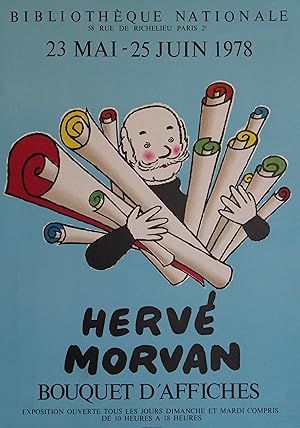
![Image du vendeur pour [Map screen]. mis en vente par Daniel Crouch Rare Books Ltd](https://pictures.abebooks.com/inventory/md/md31456525060.jpg)
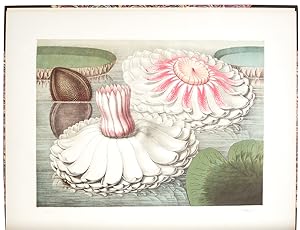
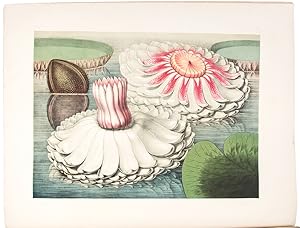
![Image du vendeur pour Buffalo Bill [and the "Frenchman's Bottle Gag," a comic tableau from the wild west show] mis en vente par Donald A. Heald Rare Books (ABAA)](https://pictures.abebooks.com/inventory/md/md765237727.jpg)
![Image du vendeur pour Pompa introitus honori serenissimi principis Ferdinandi Austriaci Hispaniarum Infantis S.R.E. Card. Belgarum et Burgundionum Gubernatoris etc. a S.P.Q. Antwerp. Decreta et adornata. .Antwerp, Theodoor van Tulden (colophon: printed by Jan van Meurs, 1641), [published January 1643]. Royal 1mo (full-sheet leaves) (57 x 42 cm). With a letterpress half-title and XXXIX single-page, double-page and larger folding plates (numbered I-XXXIX in the table of plates, printed and assembled from 43 copper plates numbered [1]-[2], 3-43) depicting the rich allegorical and ornamental triumphal arches and festive decorations, paintings, statues, etc., all designed by Pieter Paul Rubens, all but one for the triumphal entry of the Spanish cardinal-infante Ferdinand into Antwerp in 1635. Further with 46 smaller engravings in the text, depicting coins and medals, and numerous woodcut decorated initials (4 series). Contemporary overlapping vellum, manuscript title on spine. mis en vente par ASHER Rare Books](https://pictures.abebooks.com/inventory/md/md30946083093.jpg)
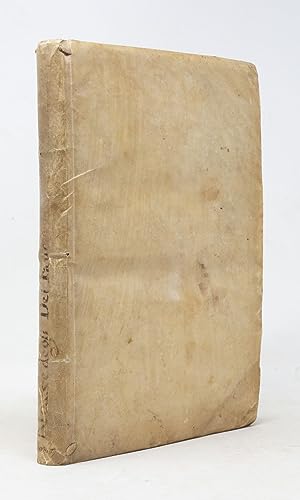
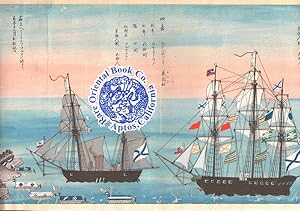

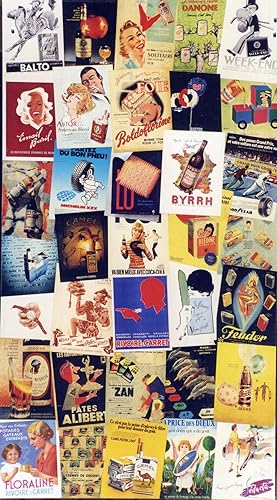
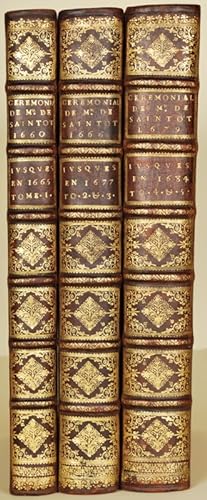
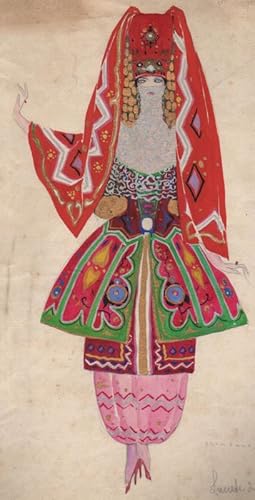
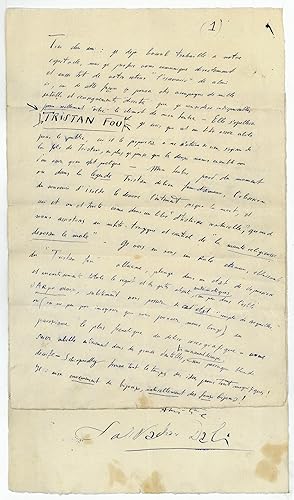
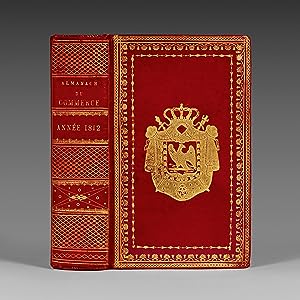
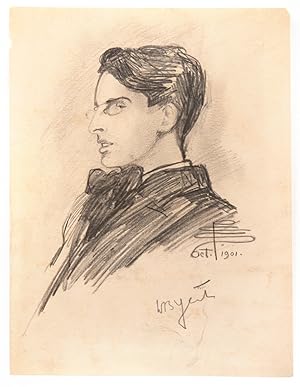
![Image du vendeur pour L'Occhiale all'Occhio. Dioptrica Pratica [.] Dove si tratta della Luce, della Refrattione de raggi, dell'Occhio, della Vista e degli aiuti, che dare si possono à gli occhi per vedere quasi l'impossibile. Dove in oltre si spiegano le regole pratiche di fabbricare Occhiali à tutte le viste, e Cannocchiali da osservare i pianeti, e le stelle fisse, da terra, da mare, et altri da ingrandire migliaia di volte i minimi de gli oggetti vicini mis en vente par SOPHIA RARE BOOKS](https://pictures.abebooks.com/inventory/md/md30574472060.jpg)
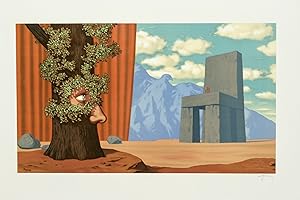
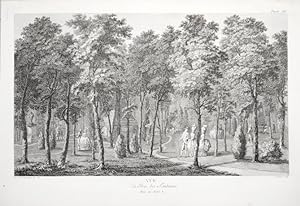
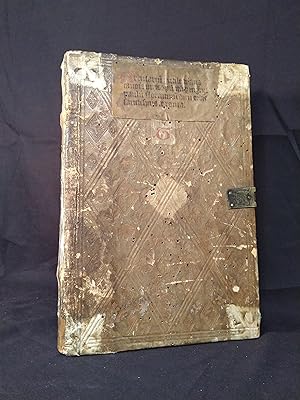

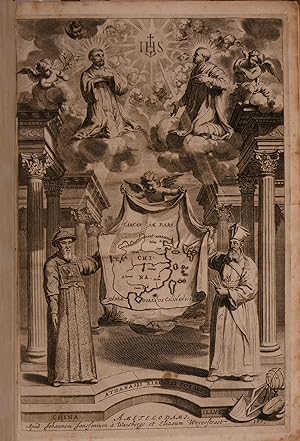
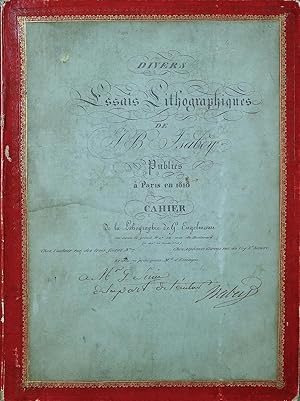
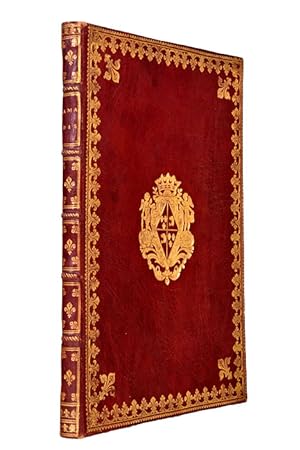
![Image du vendeur pour [Journal des Théâtres]. - Le Nouveau Spectateur, ou Examen des nouvelles pièces de Théâtre, servant de Répertoire universel des spectacles. Bimensuel de 14 livraisons du 1er Juin 1776 au 15 Octobre 1776.- Journal Des Théâtres ou le Nouveau Spectateur, Servant de Répertoire universel des Spectacles. Bimensuel de 30 livraisons et 1 prospectus du 1er avril 1777 au 15 juin 1778.- Le Censeur Dramatique ou Journal des principaux Théâtres de Paris et des Départemens, par une Société de Gens-de-lettres. Bimensuel de 31 livraisons et 1 prospectus du 27 août 1797 au 28 juin 1798. mis en vente par Bonnefoi Livres Anciens](https://pictures.abebooks.com/inventory/md/md19024642081.jpg)
